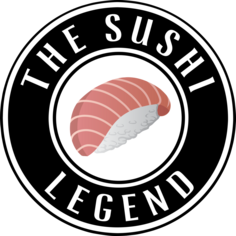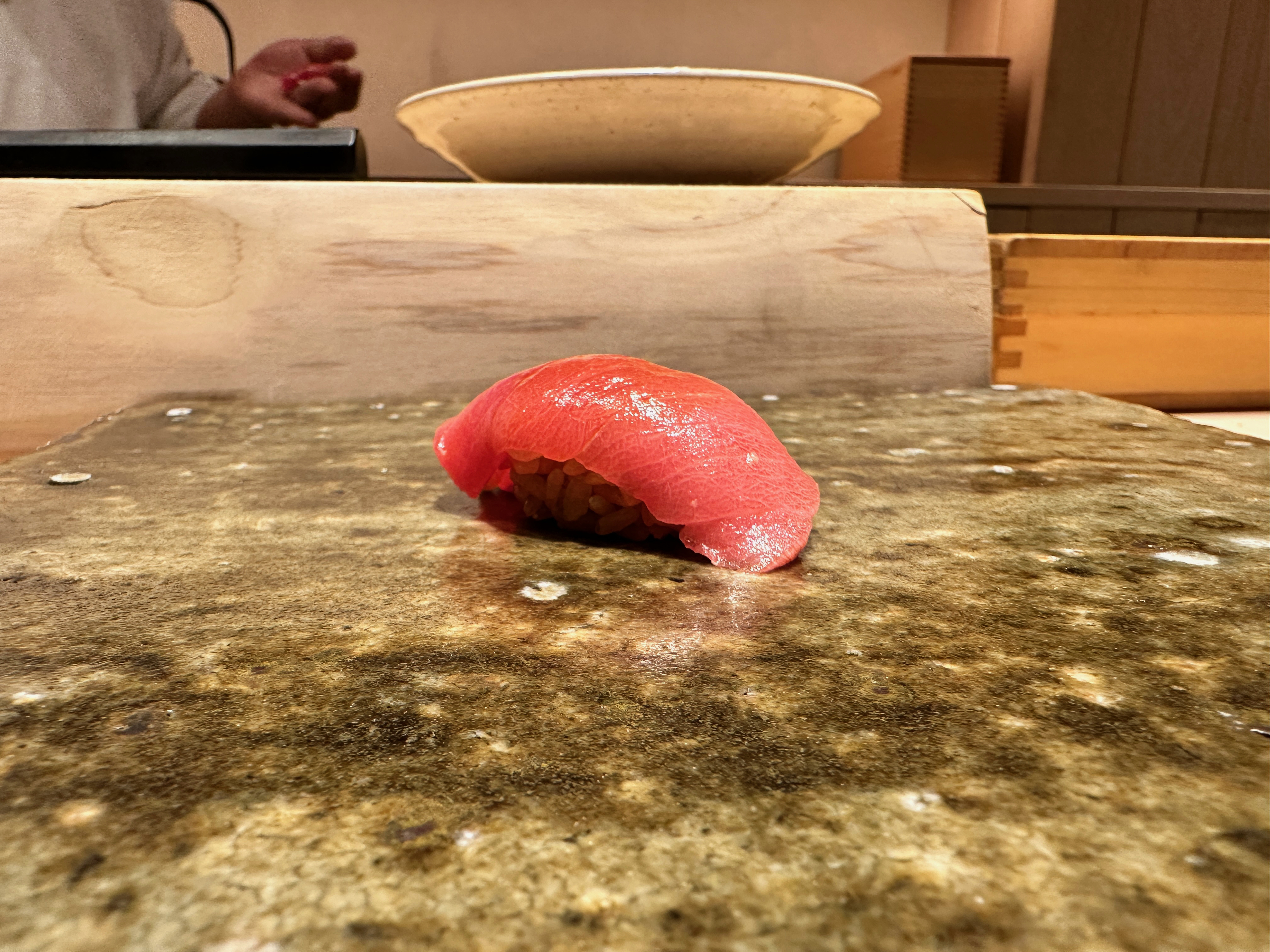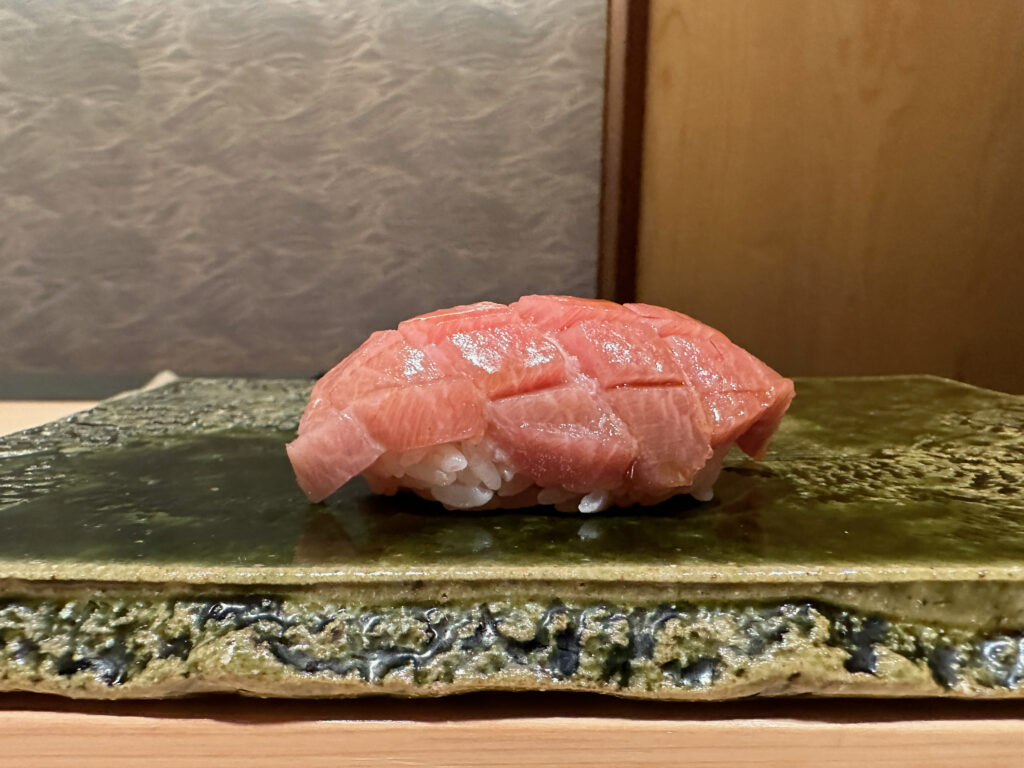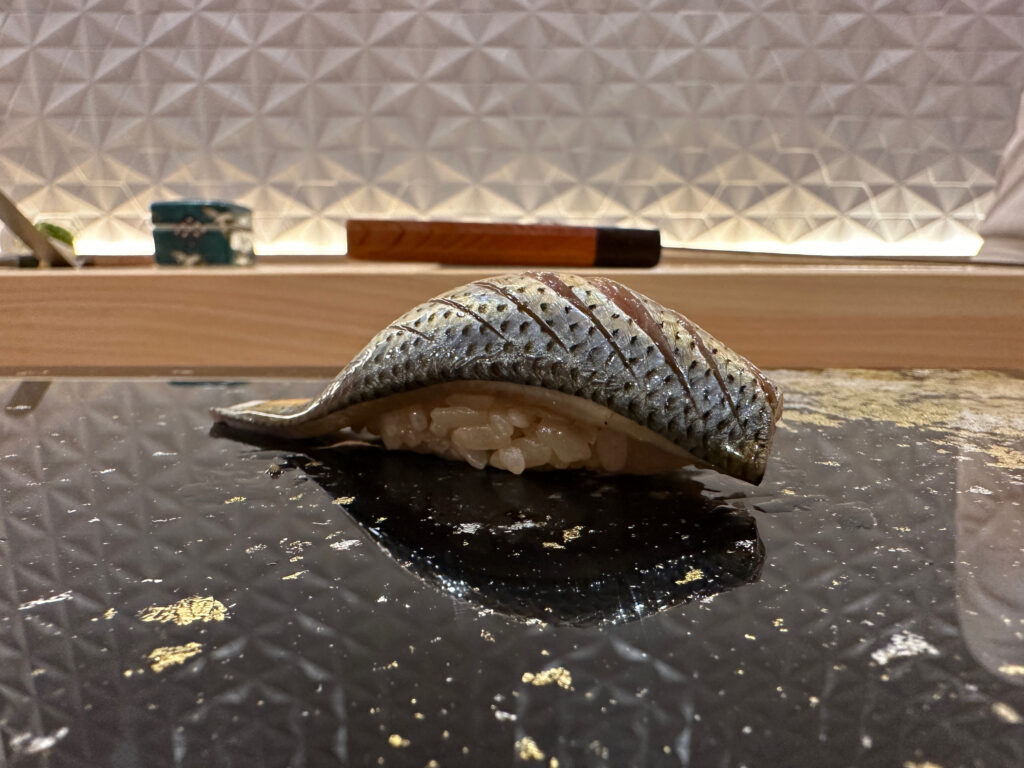
Kohada in the shadow of Namba-san
There are a few perks to operating this blog.
First, I get to write whatever I want. If I decide to spend 380 words on why The Green Ranger story should have won an Emmy, there’s nothing anyone can do about it.
And sometimes (slash literally this one time), I get an email like this on a random Sunday from a reader/legend:

Now, normally I don’t accept dinner invitations. No offense, but a bunch of you are crazy, some of you are self-serving sushiya owners, and many of you are both. But I actually follow a little known blogger rule: “If you get offered a gratis $1,000 ticket to a renowned sushiya in town for 5 days only, and the offeror exists on LinkedIn, accept”. This good samaritan/hero did exist on LinkedIn, though no profile picture. After checking I had life insurance in order, I accepted.
The pop-up was being organized by Sendo NYC
If you haven’t heard of Sendo, that’s probably because they don’t exist – yet. When it opens, it will be an up-market, omakase-only sushiya – yes, another one in NYC – located in Koreatown. This pop-up is the first in what they call a rotating Shokunin series. They’re supposed to be at Sendo itself, but the sushiya wasn’t ready, so the five night event was hosted at Icca in TriBeCa instead. If you’re new here, my late 2022 visit to Icca was one of the best meals I’ve had in New York City (review here). So it was a good backup for Namba-san.
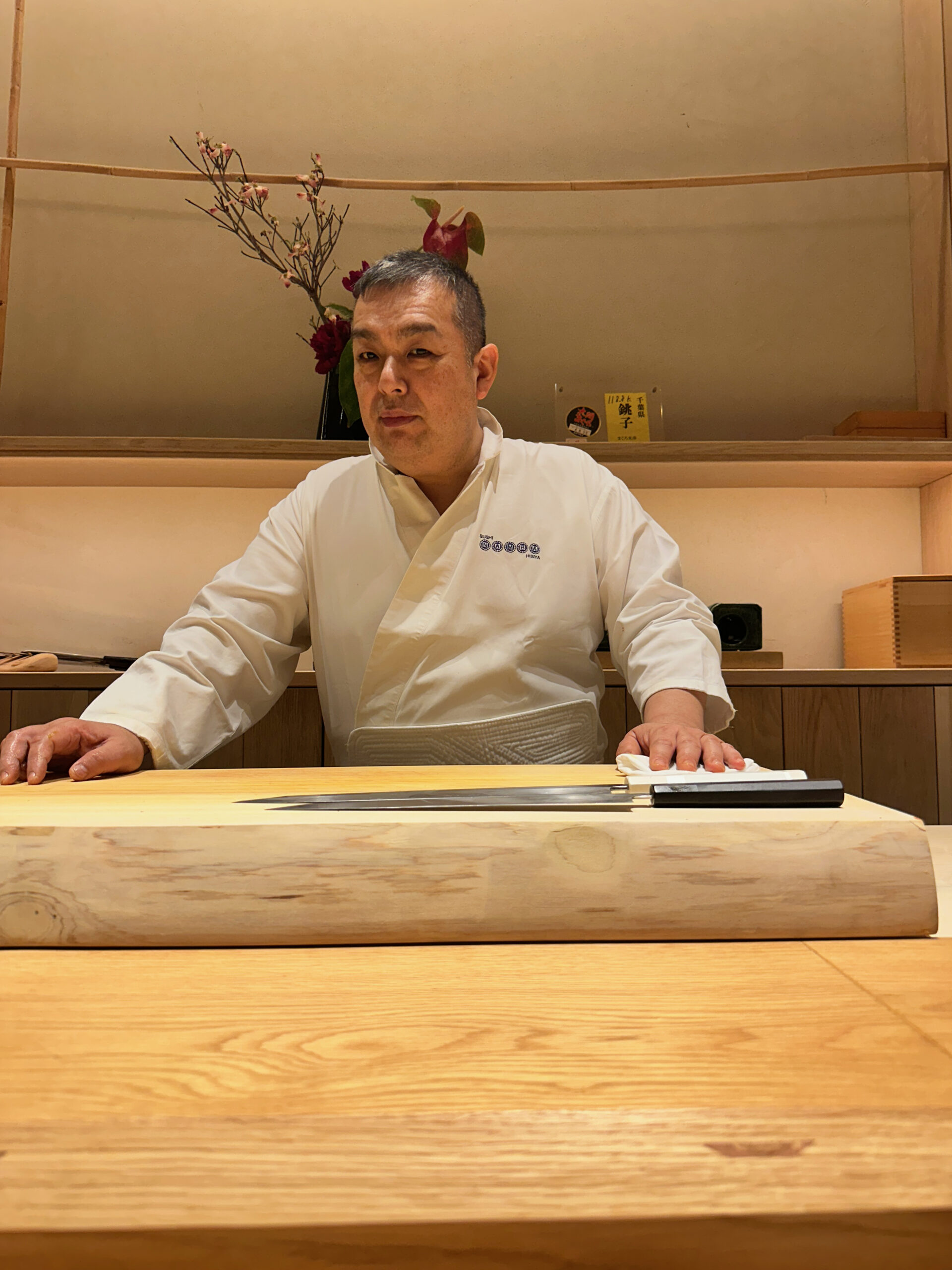
Hidefumi Namba in the flesh
Oh ya, let’s talk about Hidefumi Namba
People talk about great chefs like they’re basketball players. I can picture Bill Simmons, a writing genius slash online meme, telling David Chang that “Eric Ripert is a top 7 chef on the planet”.
But food is more subjective. For instance, I believe that the The House of Chan in Toronto grills the best filet mignons on the planet. Impossible to disprove.
And yet, many people consider Hidefumi Namba to be one of the world’s best Itamae. His credentials speak for themselves:
- Five-time winner of Tabelog Gold in Japan at his sushiya Sushi Namba Hibiya (located in Tokyo’s new Hibiya developmental area)
- One of twenty shokunin (artisans) featured in Andrea Fazzari’s acclaimed Sushi Shokunin book. I interviewed Andrea here.
- Reservations are are apparently impossible to secure (for mortals)
He’s also renowned for his approach to temperature. In fact, Tableall, the Japanese site that makes it possible for peons like us to get reservations at Japanese sushiya, said, and I quote here, that he has a “fetish for temperature precision”.
Well then.
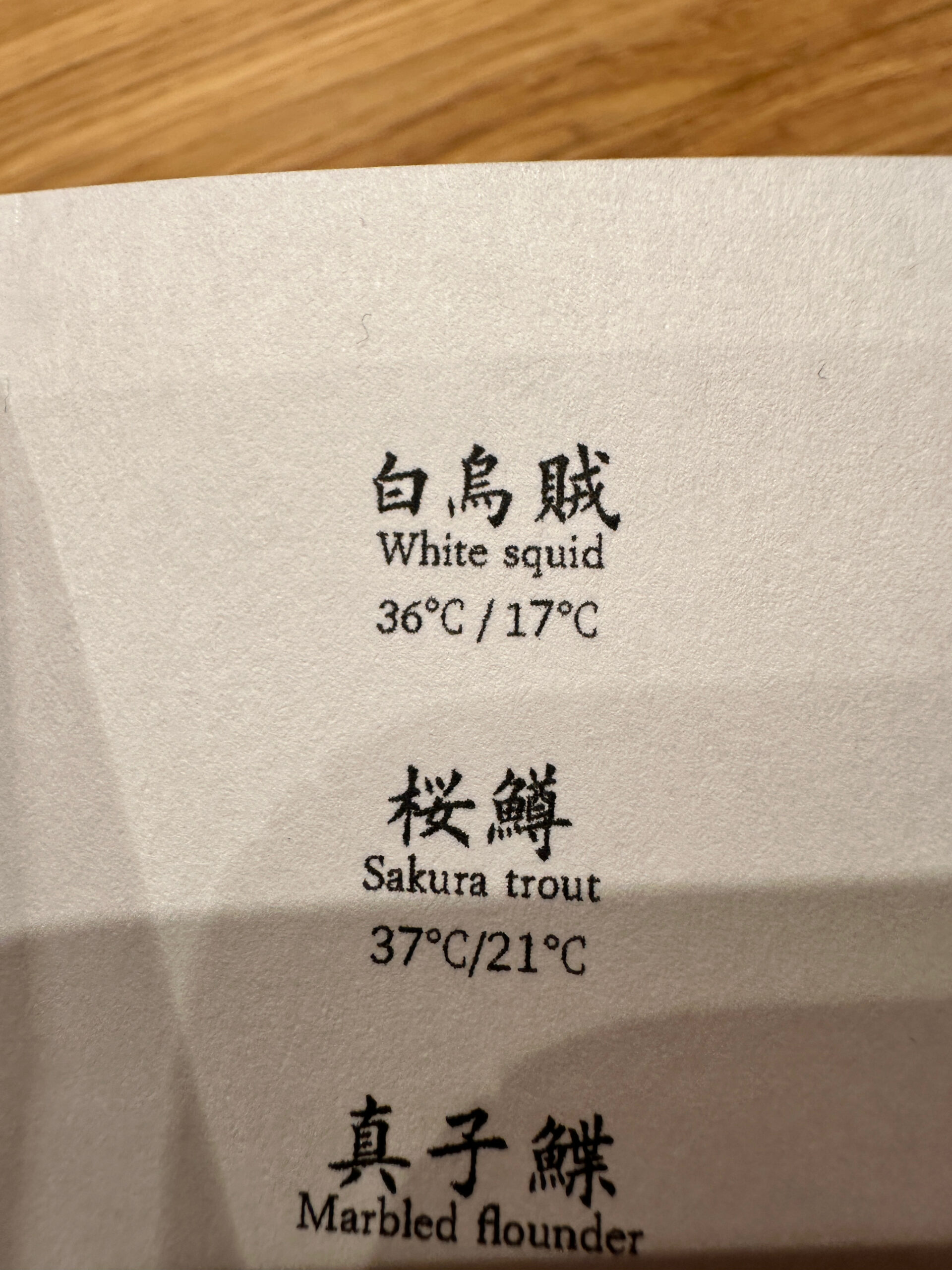
The temperature of the shari (rice) – left and neta (topping) – right of each nigiri is listed on the provided menu
Did I mention the price?
$1,000. Taxes and gratuities are included, as was – or supposed to be – a complimentary glass of Assemblage 4, from Iwa 5 and their former Dom Perignon Chef De Cave (the coolest job title I’ve ever heard).
Unfortunately, at least during our night, that pour didn’t happen. My dining mate/future godparent of my children had to pay on top for his alcohol. Not great.
But fortunately the meal itself delivers
We started with 6 otsumami, including Tako from Kanazawa and Katsuo (Bonito) from Chiba, lightly seared.
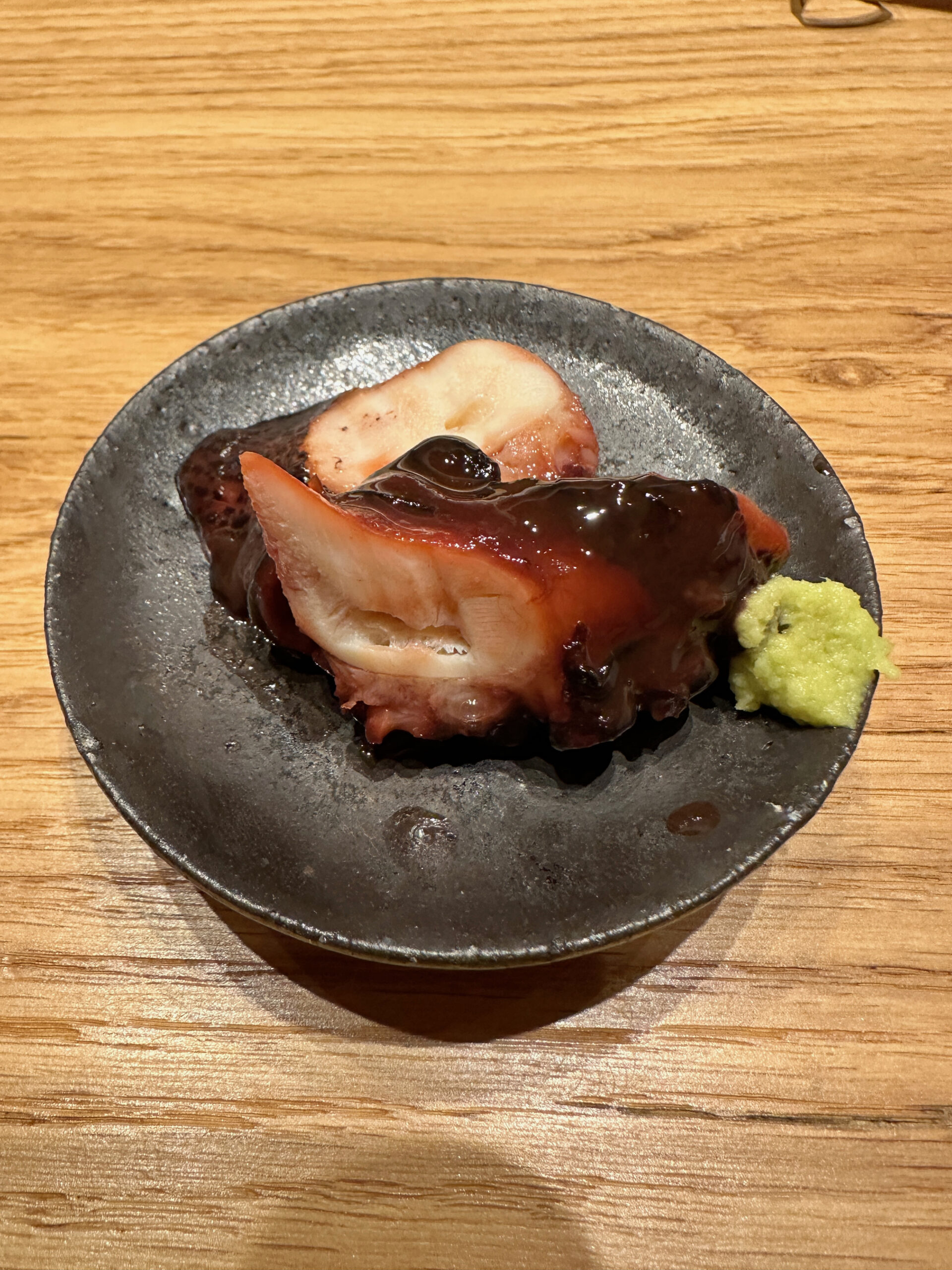
1: Tako (Octopus) from Kanazawa – a little research tells me this is a typical opener for Namba-san
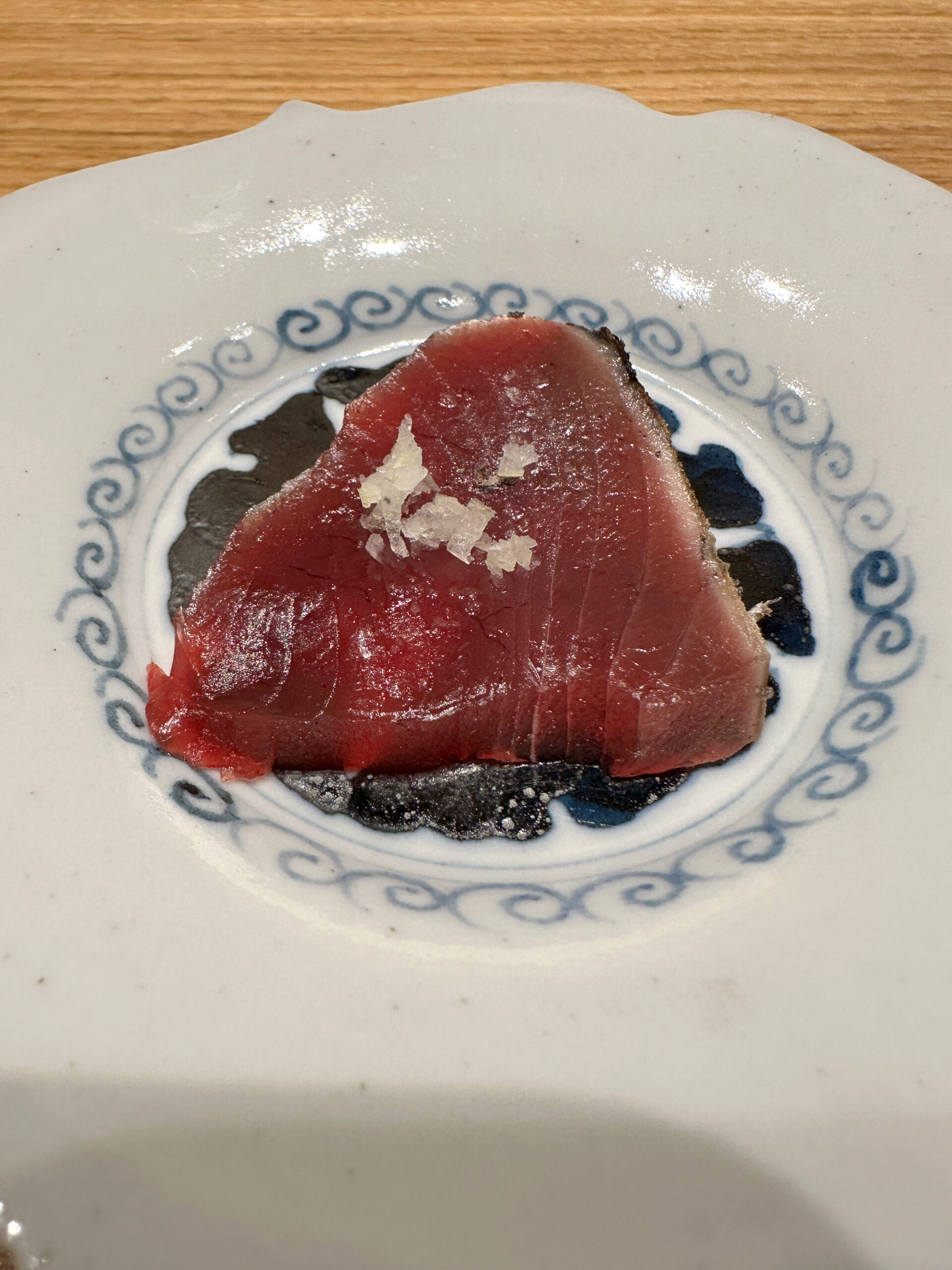
2: Katsuo (Bonito) lightly seared
There’s also Mozuku, which is a term for a collection of brown seaweed. This Mozuku was from Okinawa, a region renowned for it, and so the dish is appropriately called Okinawa Mozuku. It’s supposed to have incredible health benefits – including skin tightening? – but all I care about is the taste. This is a personal favourite.
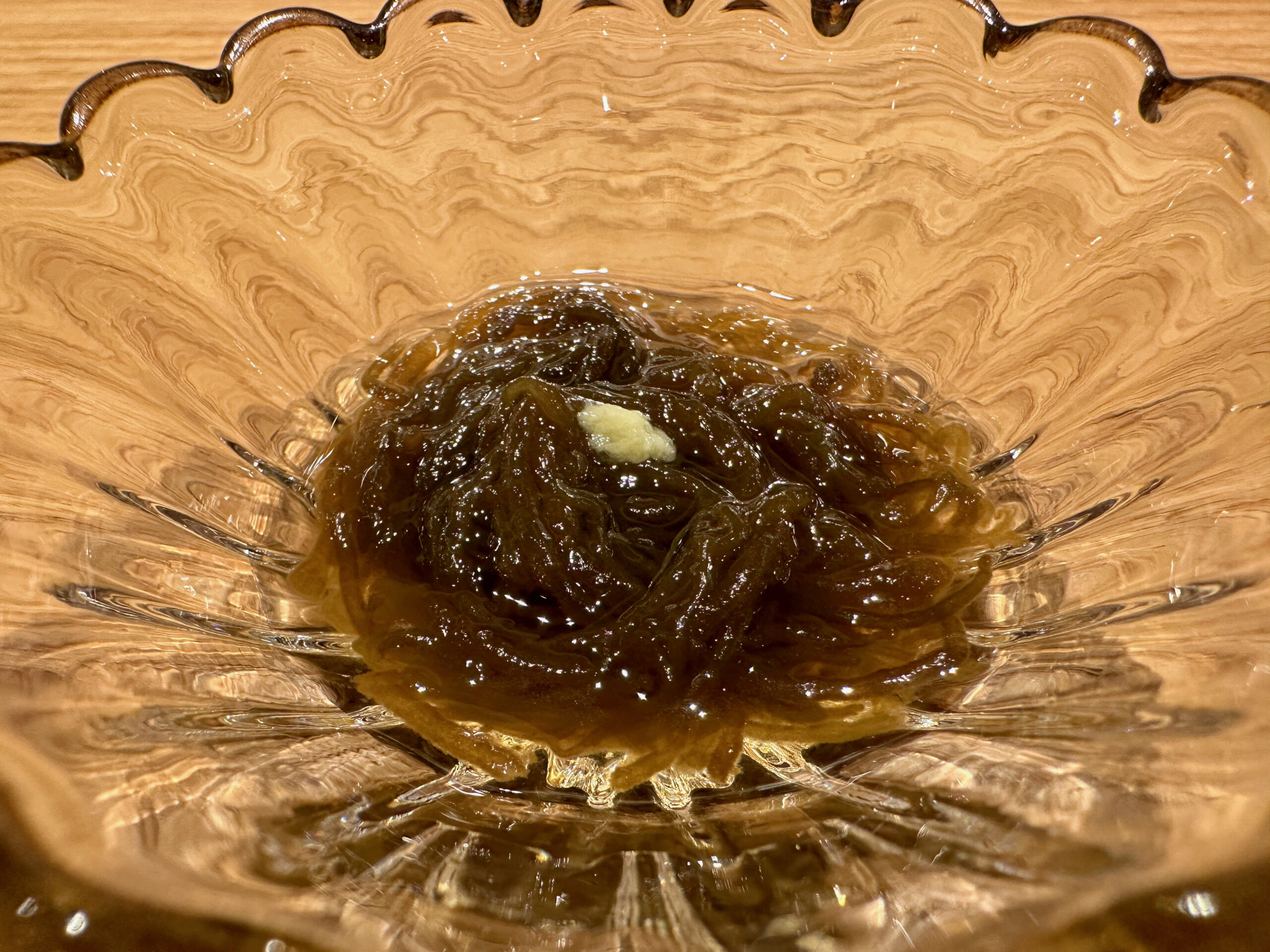
3: Okinawa Mozuku
Perhaps the best dish of the night was the Ankimo (monkfish liver).
What distinguished it was the softness and moistness. I’m not a big fan of asking “how’d you prepare this”; it feels akin to asking Alfred Borden how he did The Transported Man.
But, a keen observer will see Namba-san trim and discard a significant portion of the ankimo, serving only the centre – ostensibly the best – to customers. This is a memorable dish.
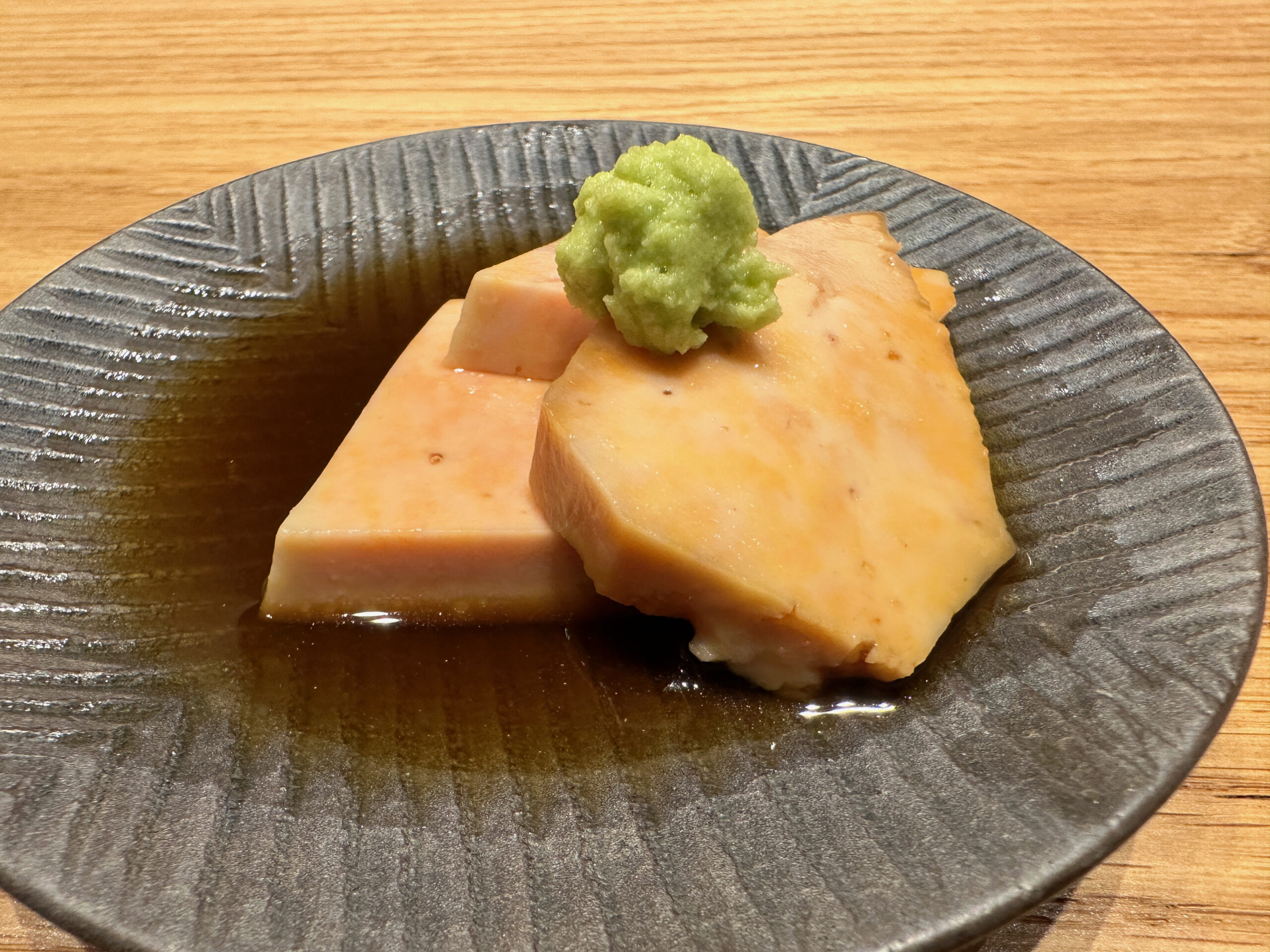
4: Ankimo
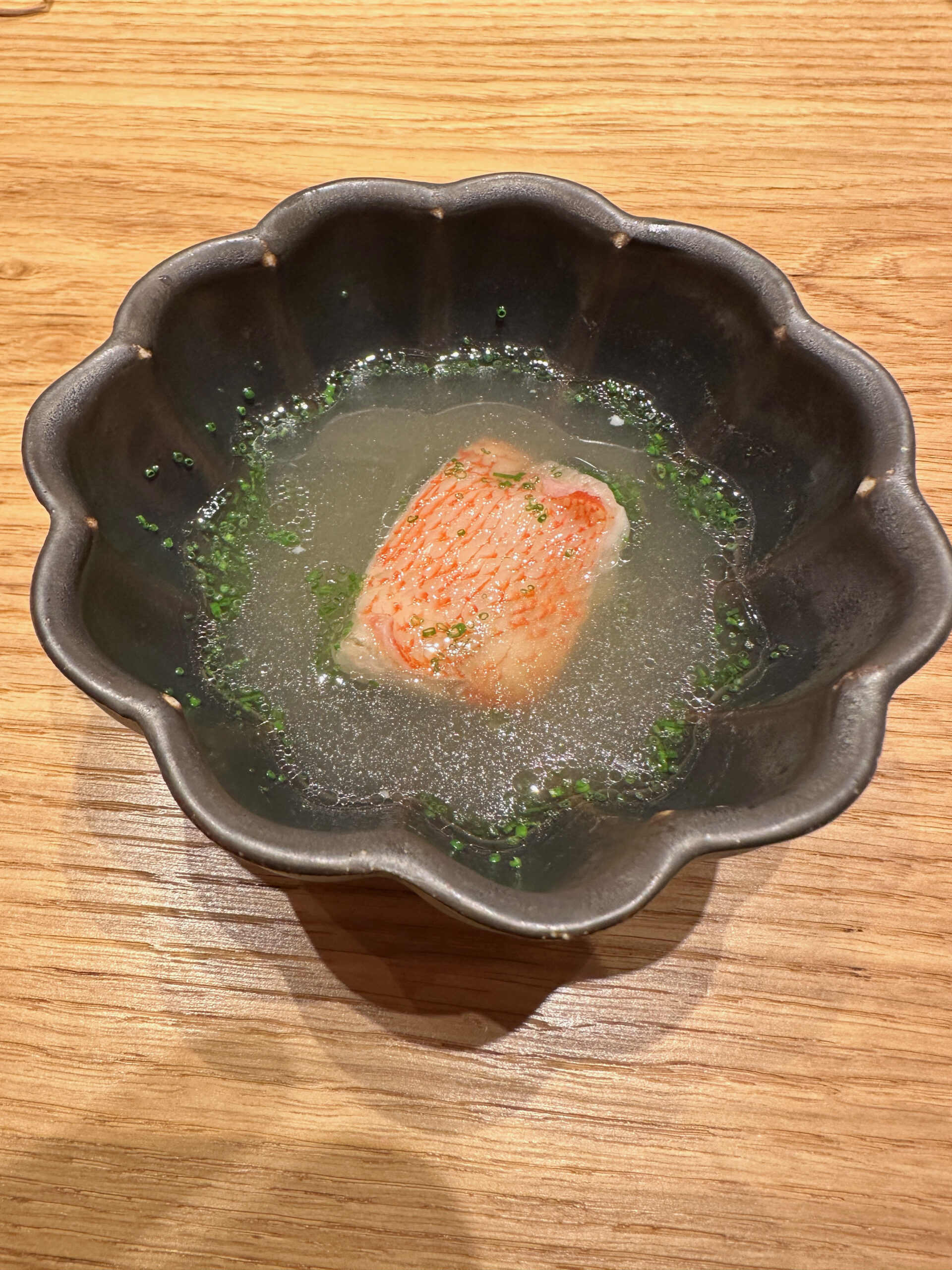
5: Kinki (Channel Rockfish) in Dashi (another Sushi Namba Hibiya staple)
No pictures of course 6, but it was a nodoguro temaki if you’re keeping score at home.
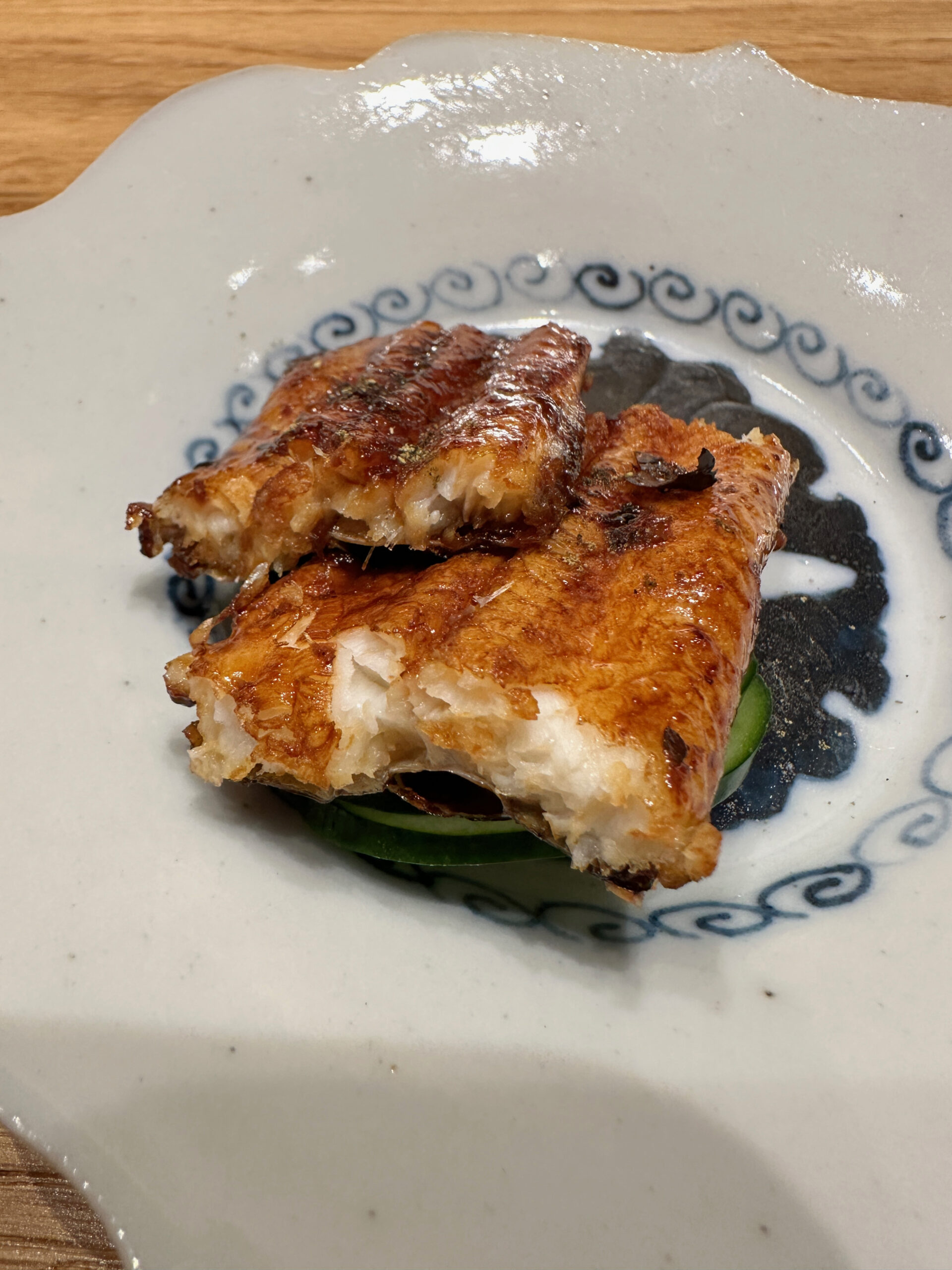
7: Anago (I always prefer my Anago at the end of the meal)
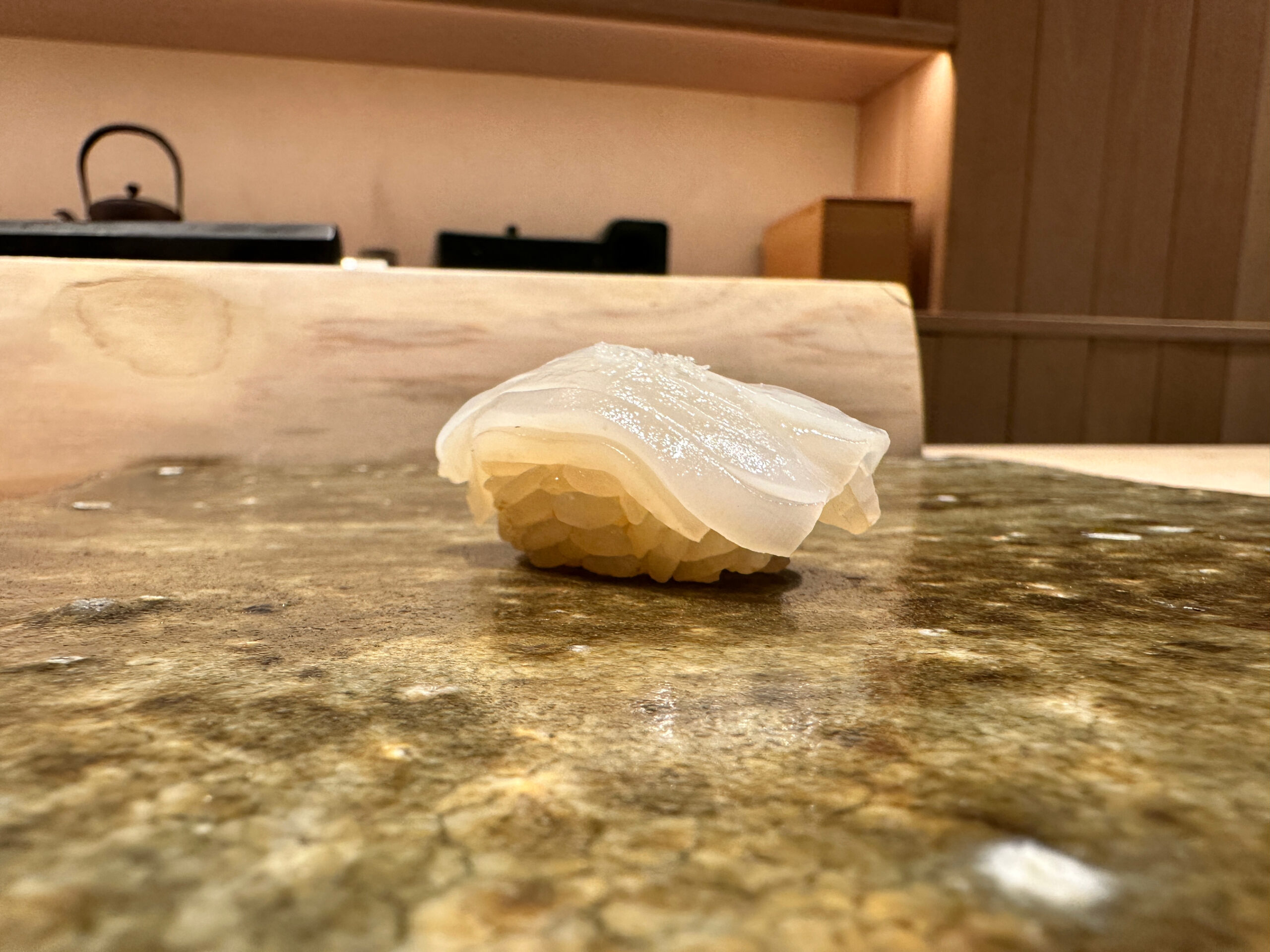
8: Kensaki Ika (White Squid/Swordtip squid)
The nigiri varies throughout the meal
Not only does the size of the nigiri change throughout, but so does the shari (rice), with different rice vinegars to match the different neta (toppings). If you’re fortunate to eat with Namba-san, do yourself a favour and turn the nigiri over (some eat the nigiri neta-down anyways) to see the shari.
The temperature also changes, though, if we’re in the trust tree, putting the temperatures on the menu felt more gimmick than necessity. Can anyone really tell the difference between a 37 degree shari and a 36 degree shari? And isn’t the entire point of sushi to nail the temperatures anyways? I digress.
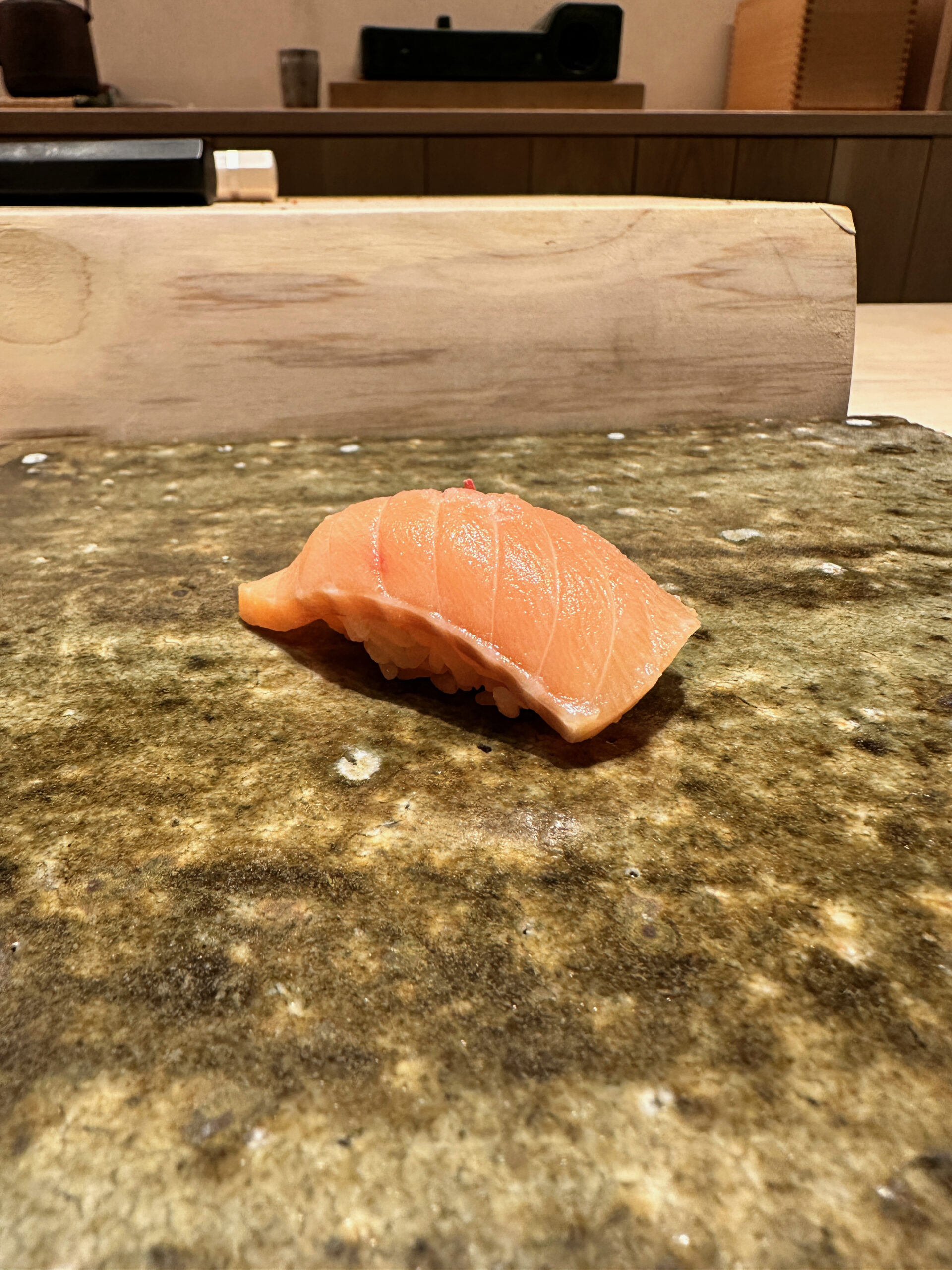
9: Sakura Masu (cherry trout) is still in season right now
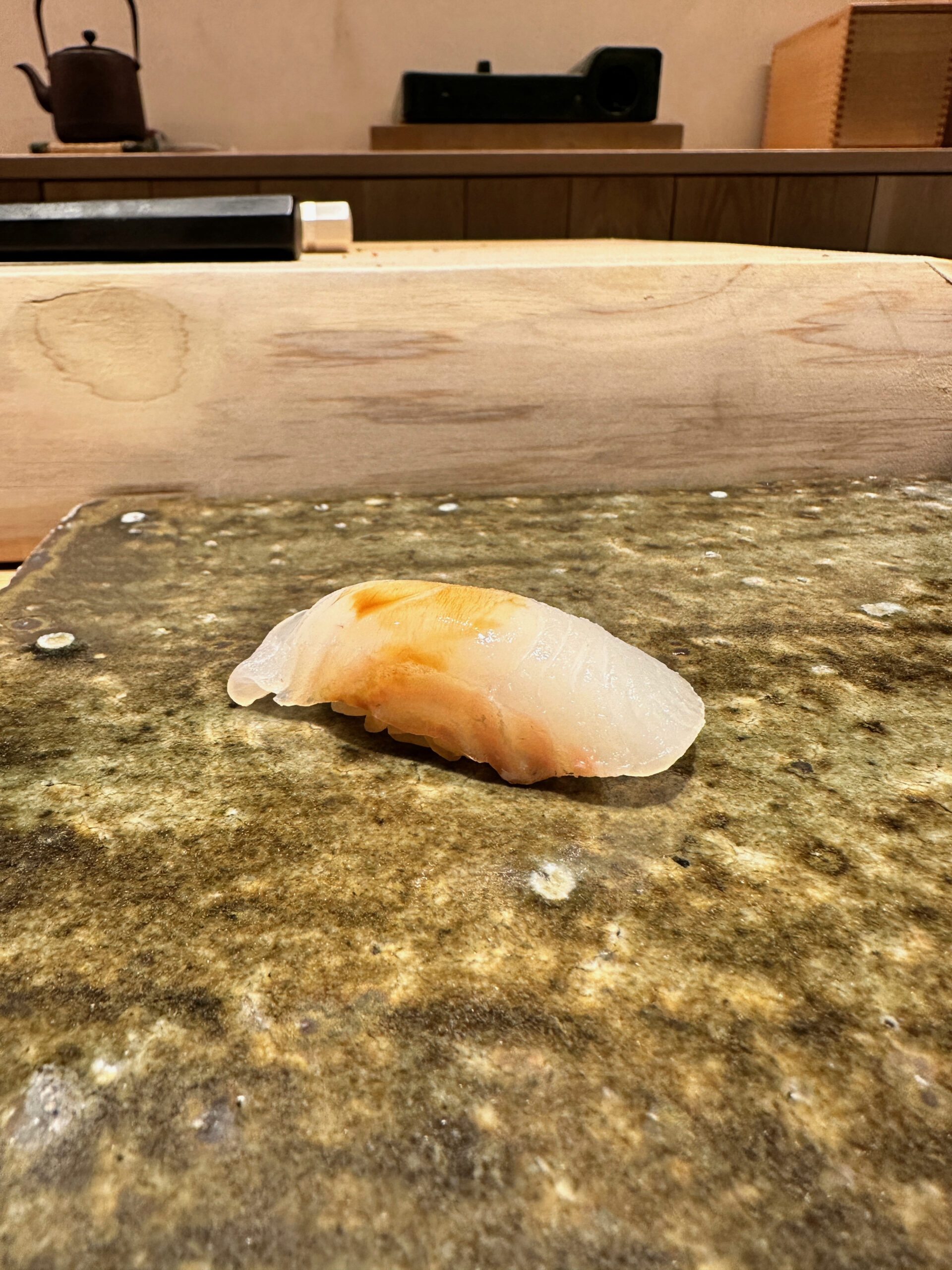
10: Makogarei (right-eyed flounder)
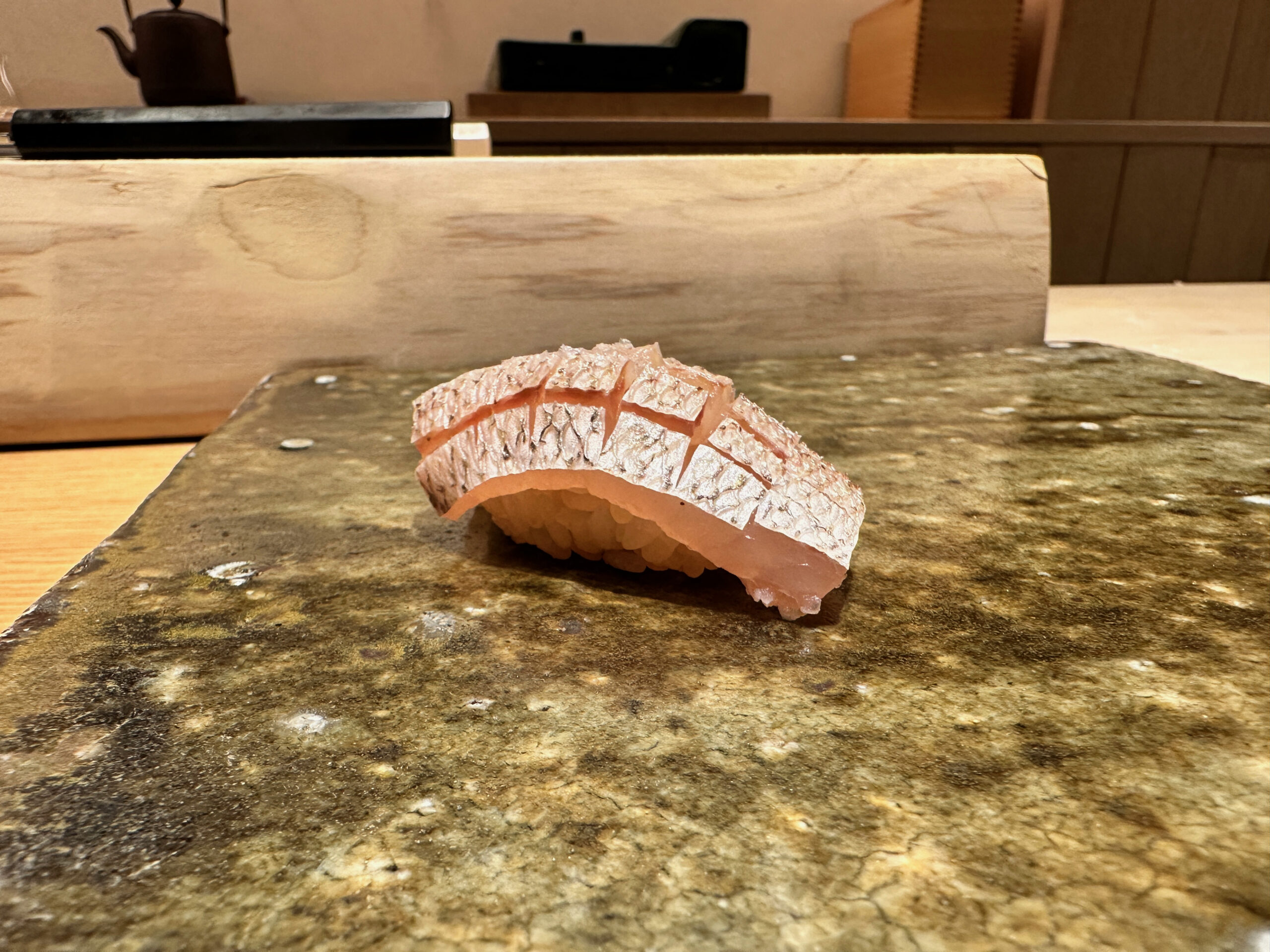
11: Kasugo (young sea bream) – lovely cross cuts on this
Another highlight is the use of Hikari-mono
Hikari-mono, or silver-skinned fish, are generally considered to be more challenging to serve for two reasons. First, they require preparation to bring out their full flavour. And second, the taste is considered by simpletons to be “fishy”. For that reason, many sushiya don’t serve them. For example, Kohada, the tribal chief of hikarimono, is rarely on menus here. I was glad to see Kasugo, Aji, Iwashi (sardine) – absolutely delicious despite the purple hat – and our old friend Kohada, served with Oboro on top.
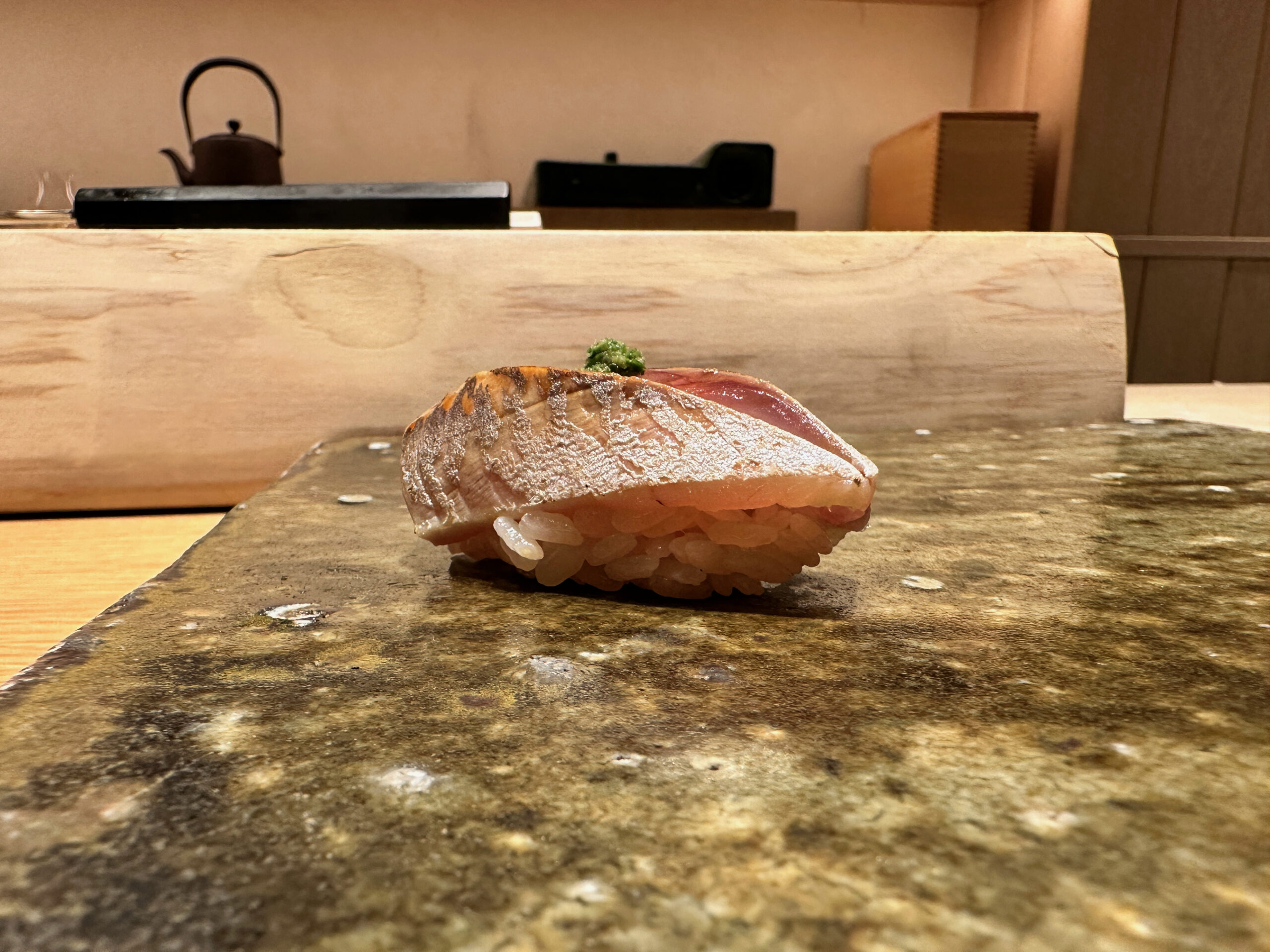
12: Aji (Horse Mackerel)
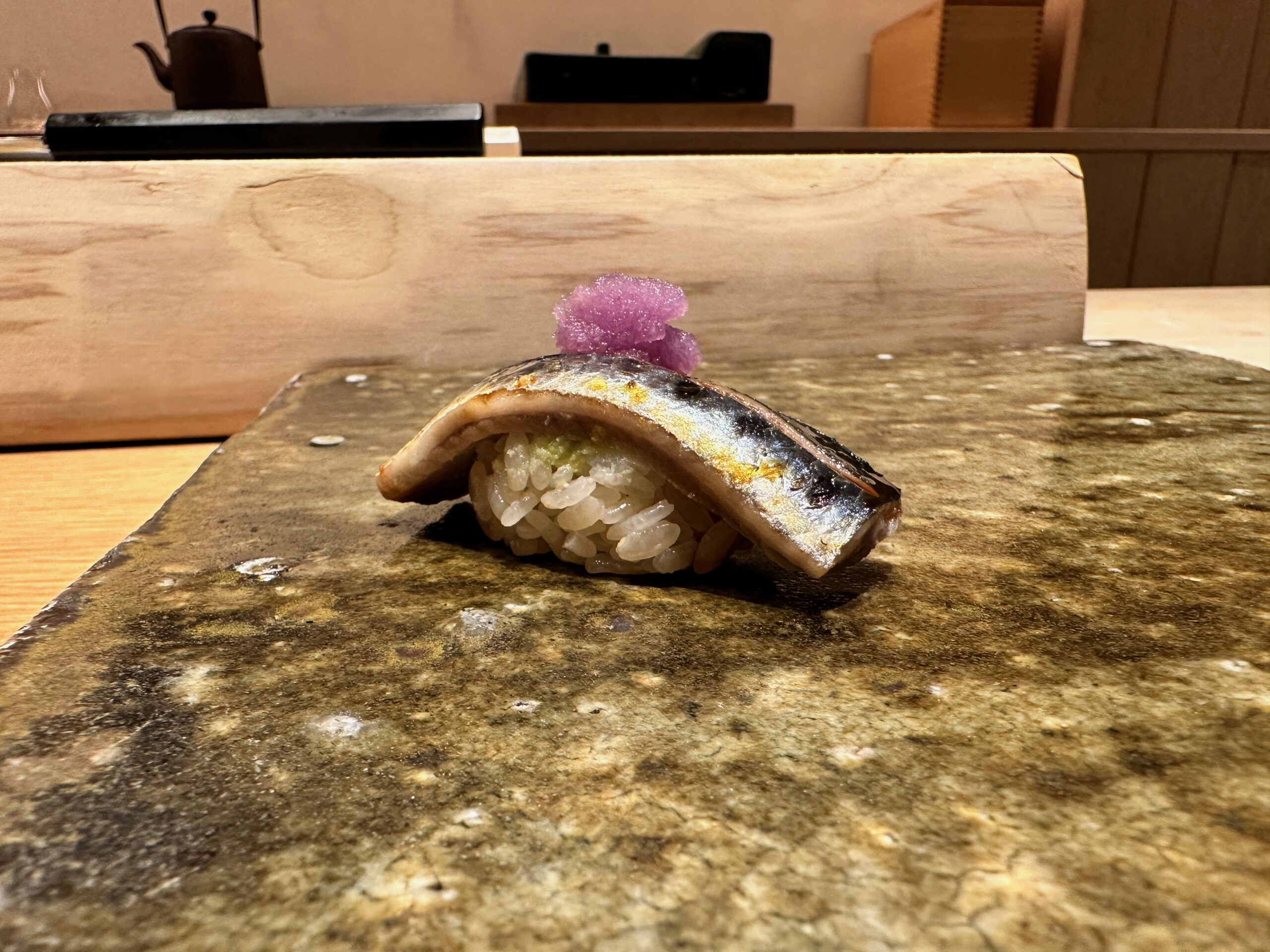
13: Iwashi (sardine) with dyed purple daikon – one of the highlights of the meal. A striking and delicious nigiri.

Another angle of the Iwashi
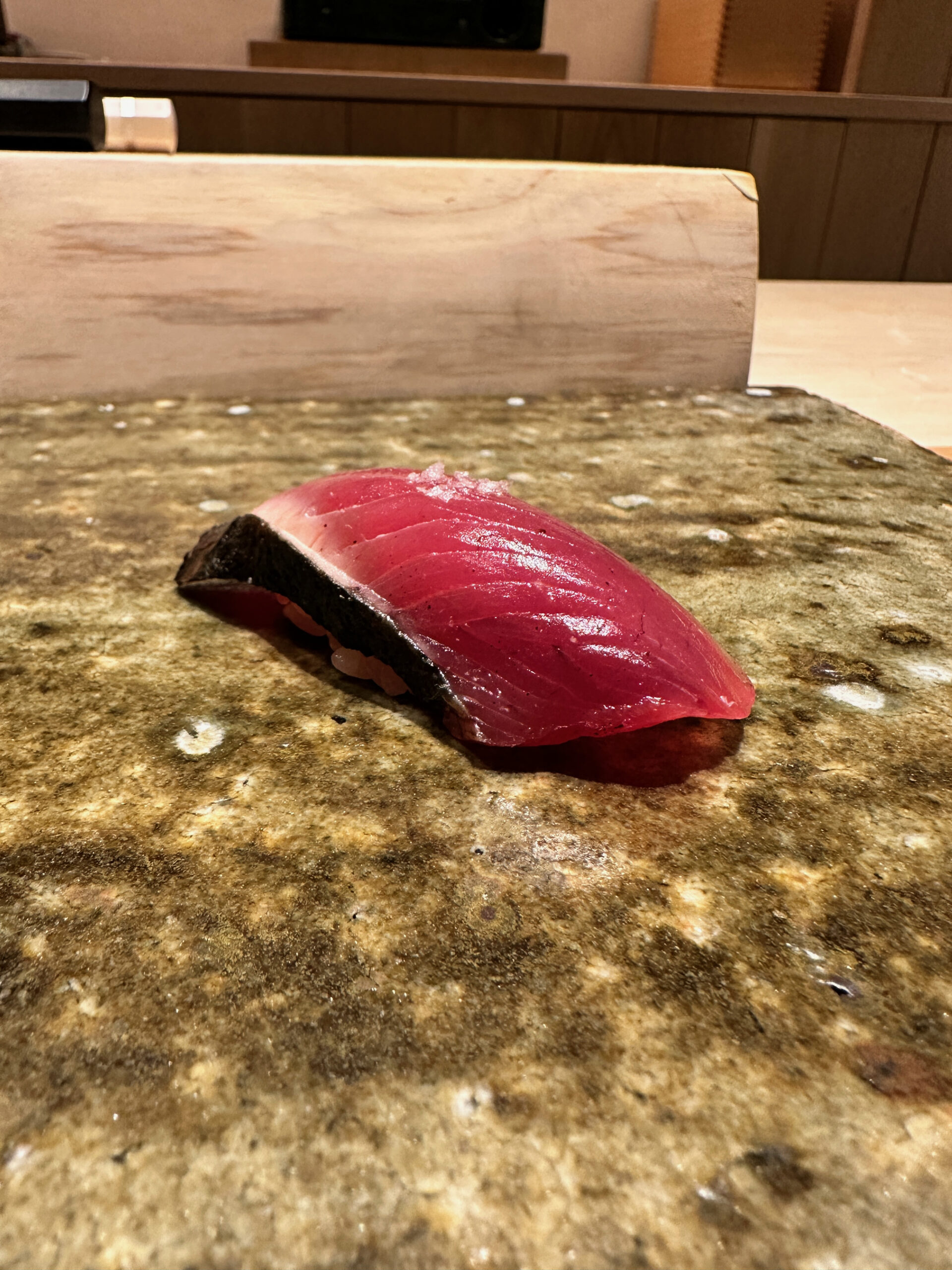
14: Katsuo
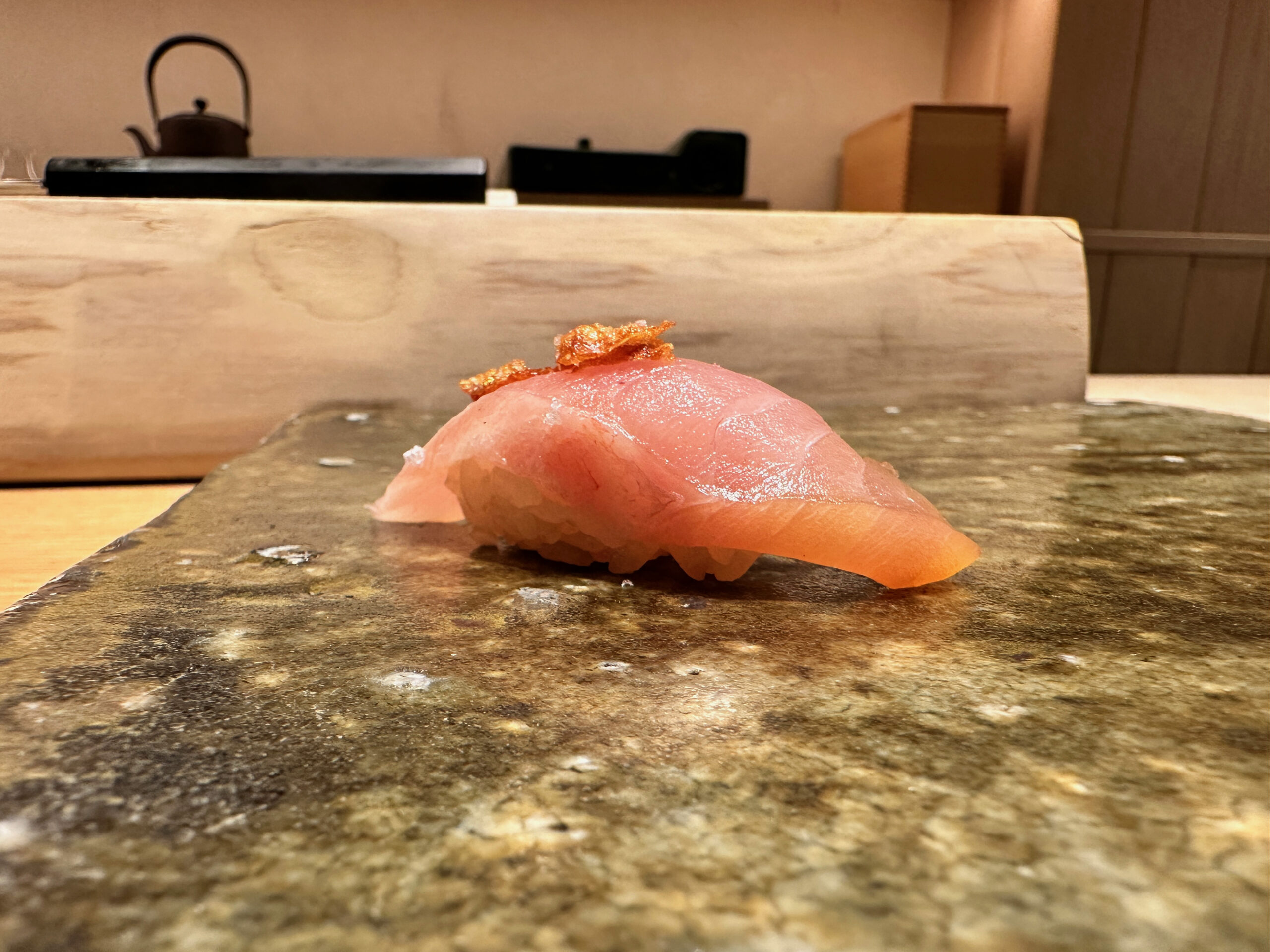
15: Kinmedai (goldeneye snapper) with fried skin on top
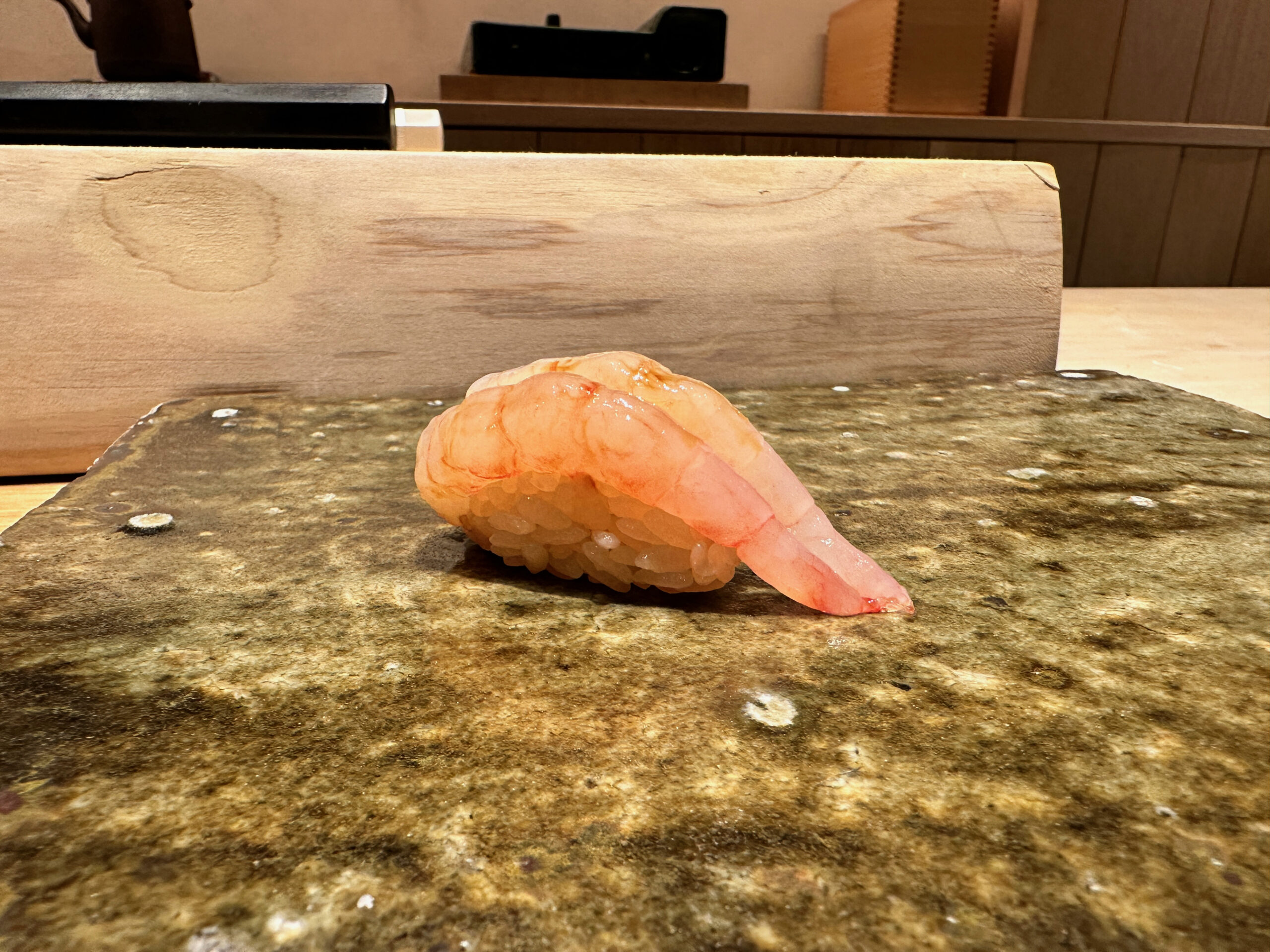
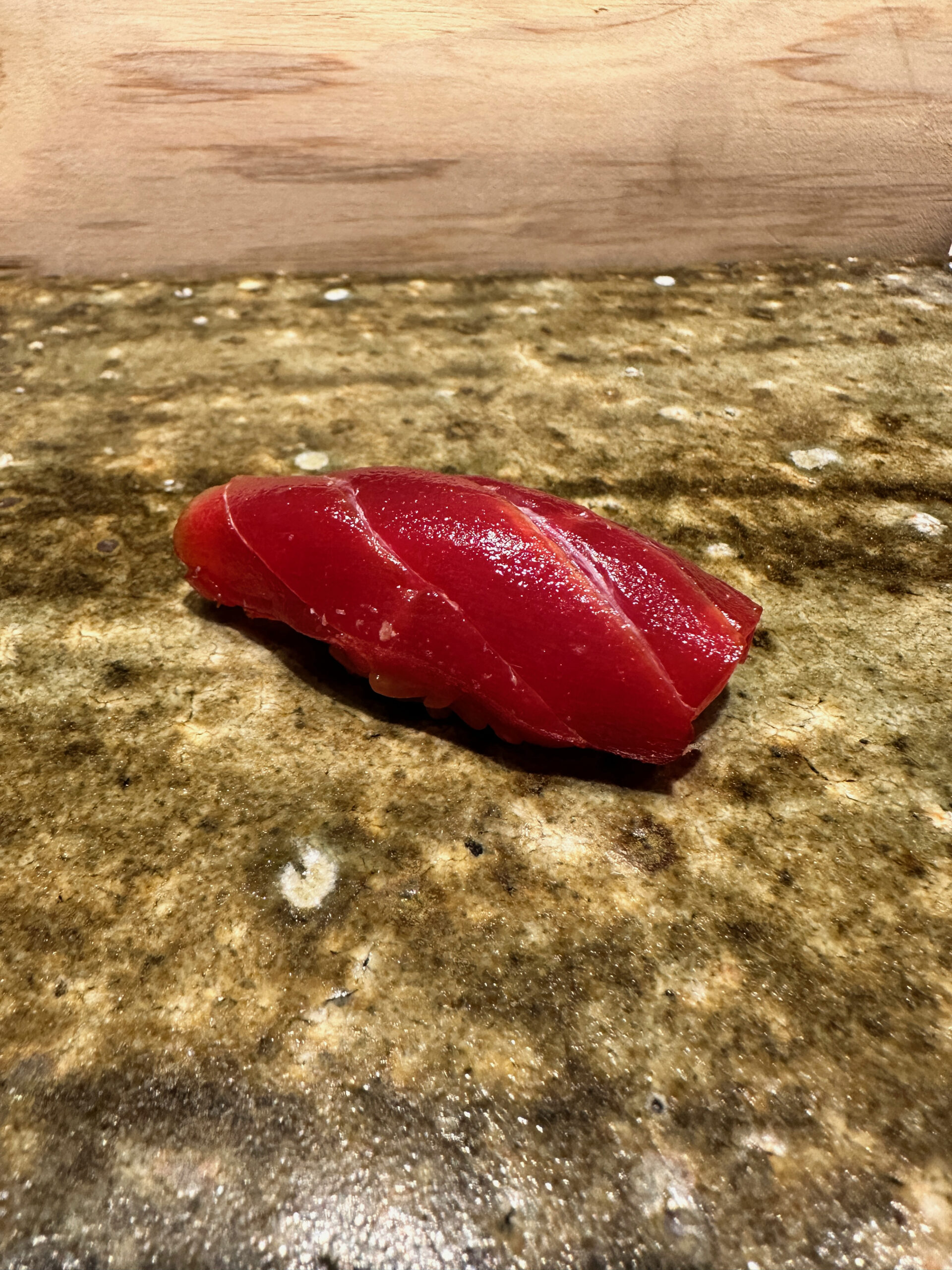
17: Akami (lean tuna) – akazu (red vinegar) shari is used here
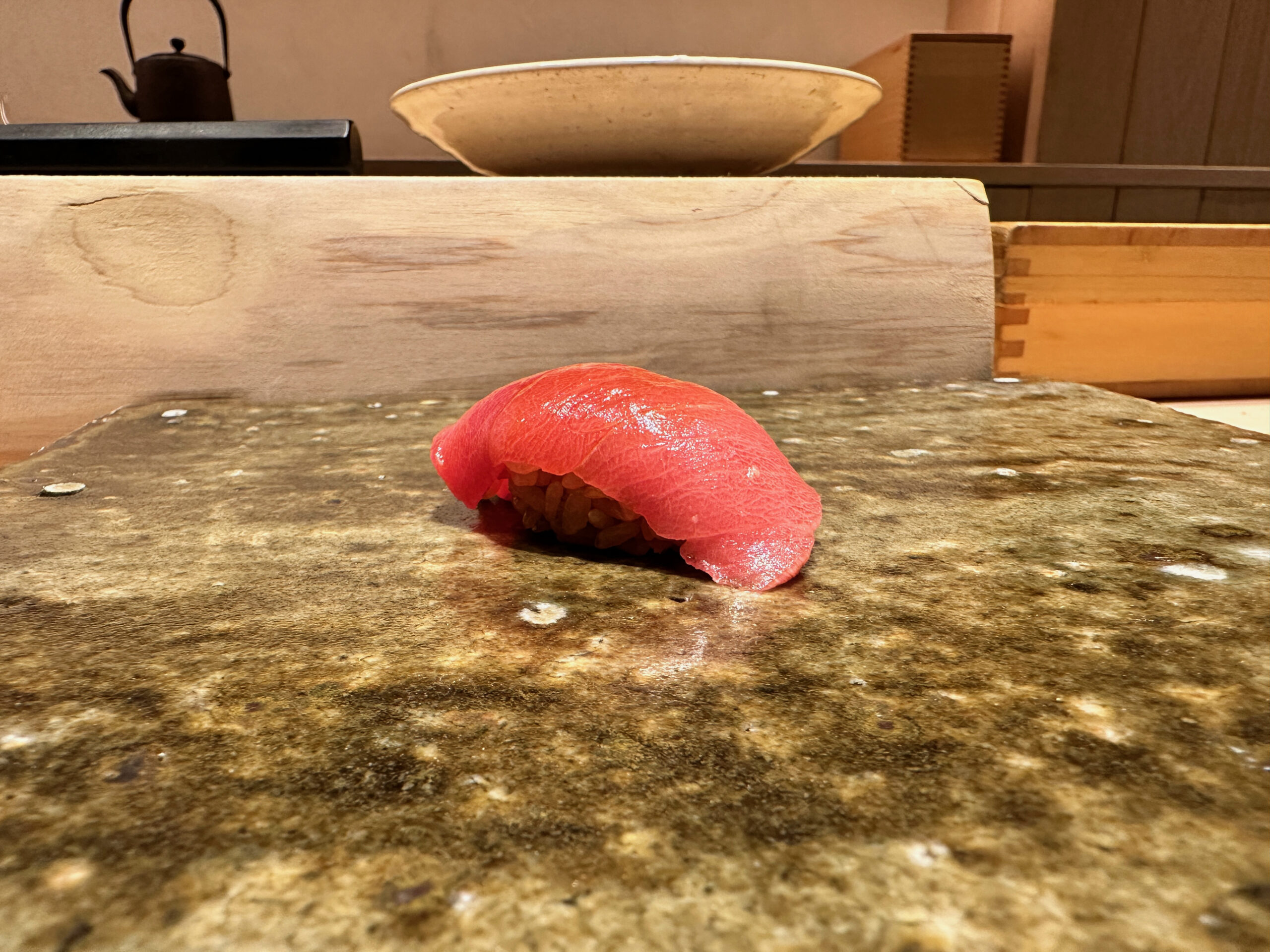
18: Chu Toro – winner for best picture of the night
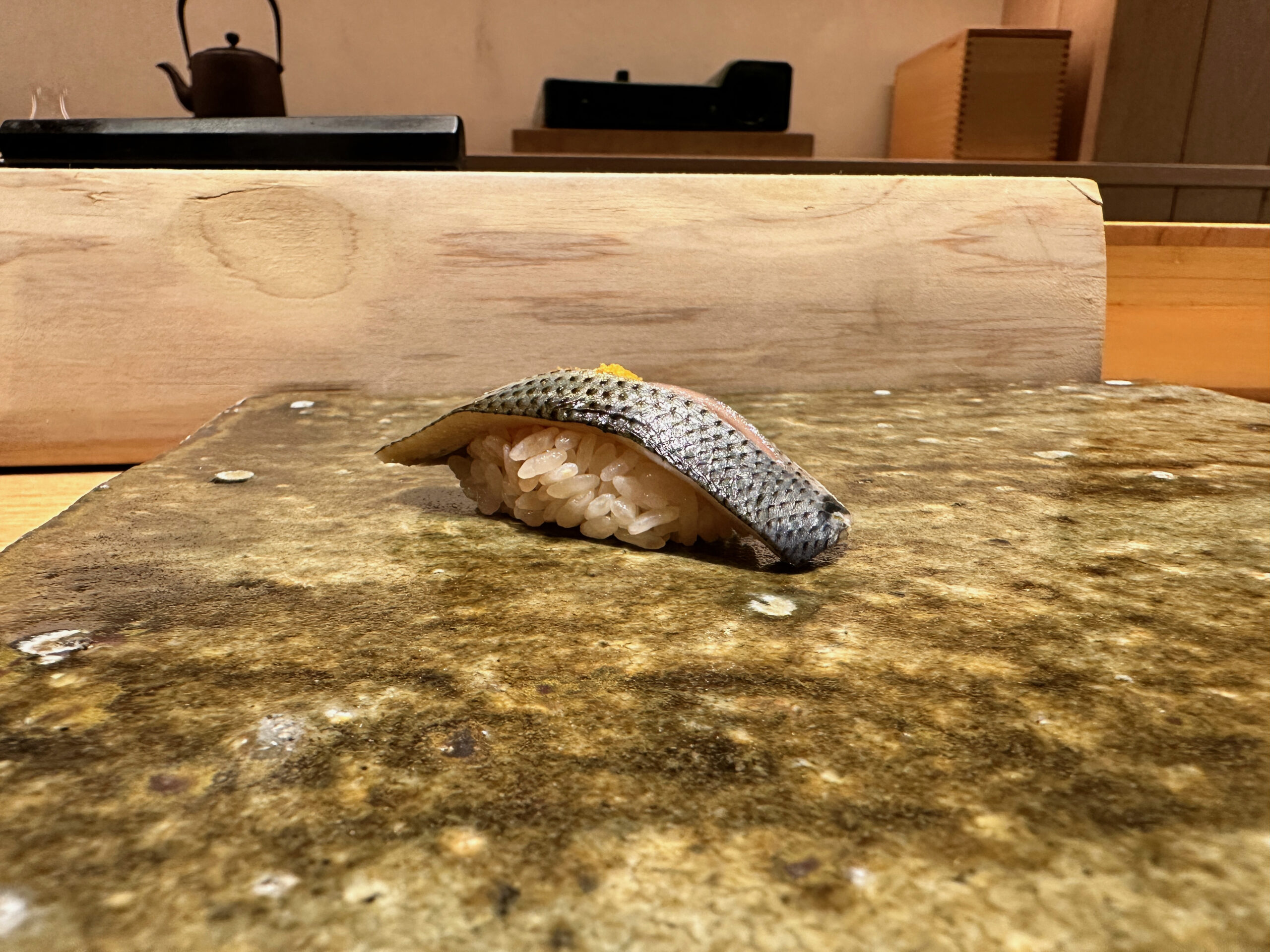
19: Kohada (Gizzard Shad) with oboro on top
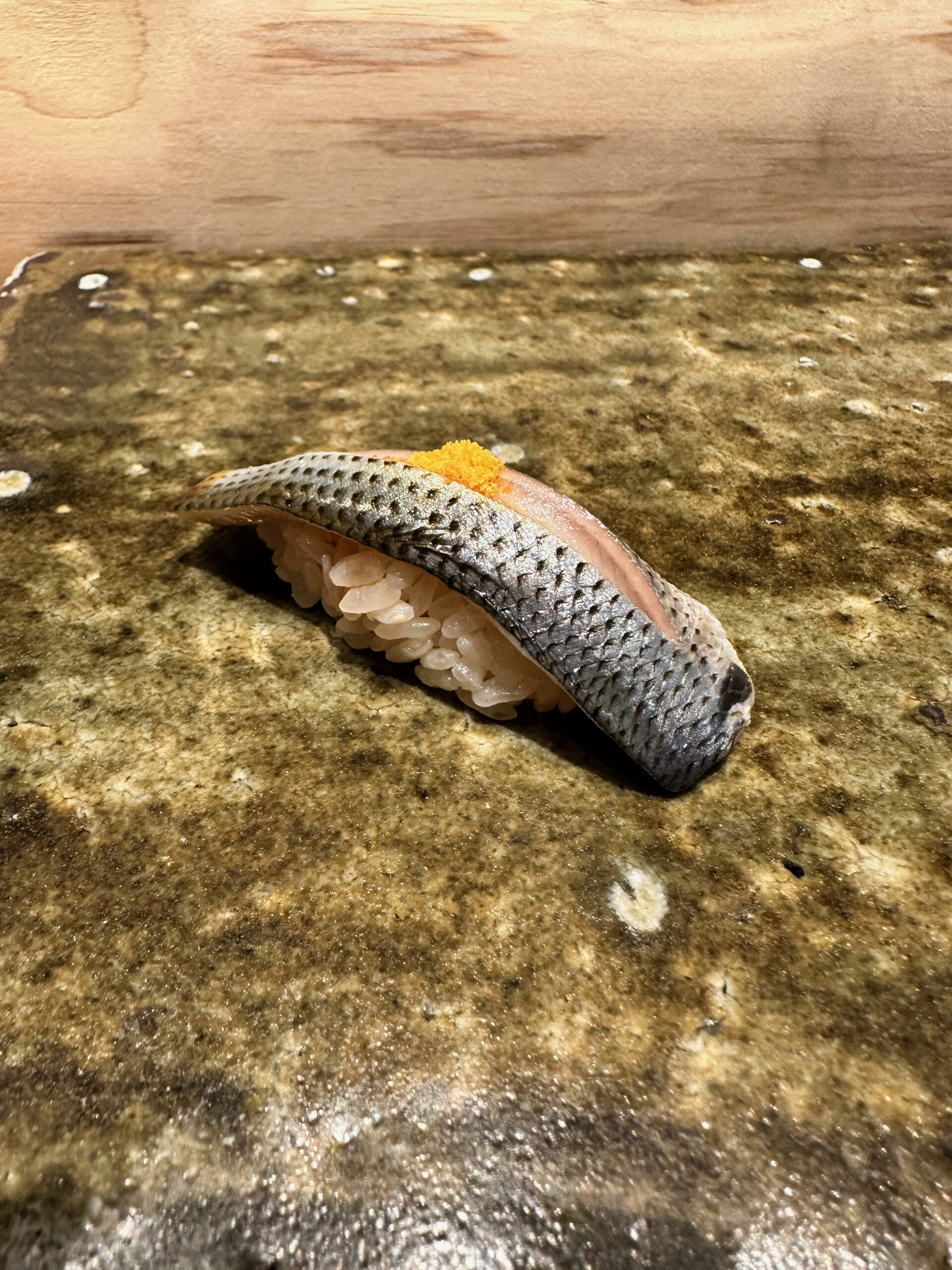
Another angle
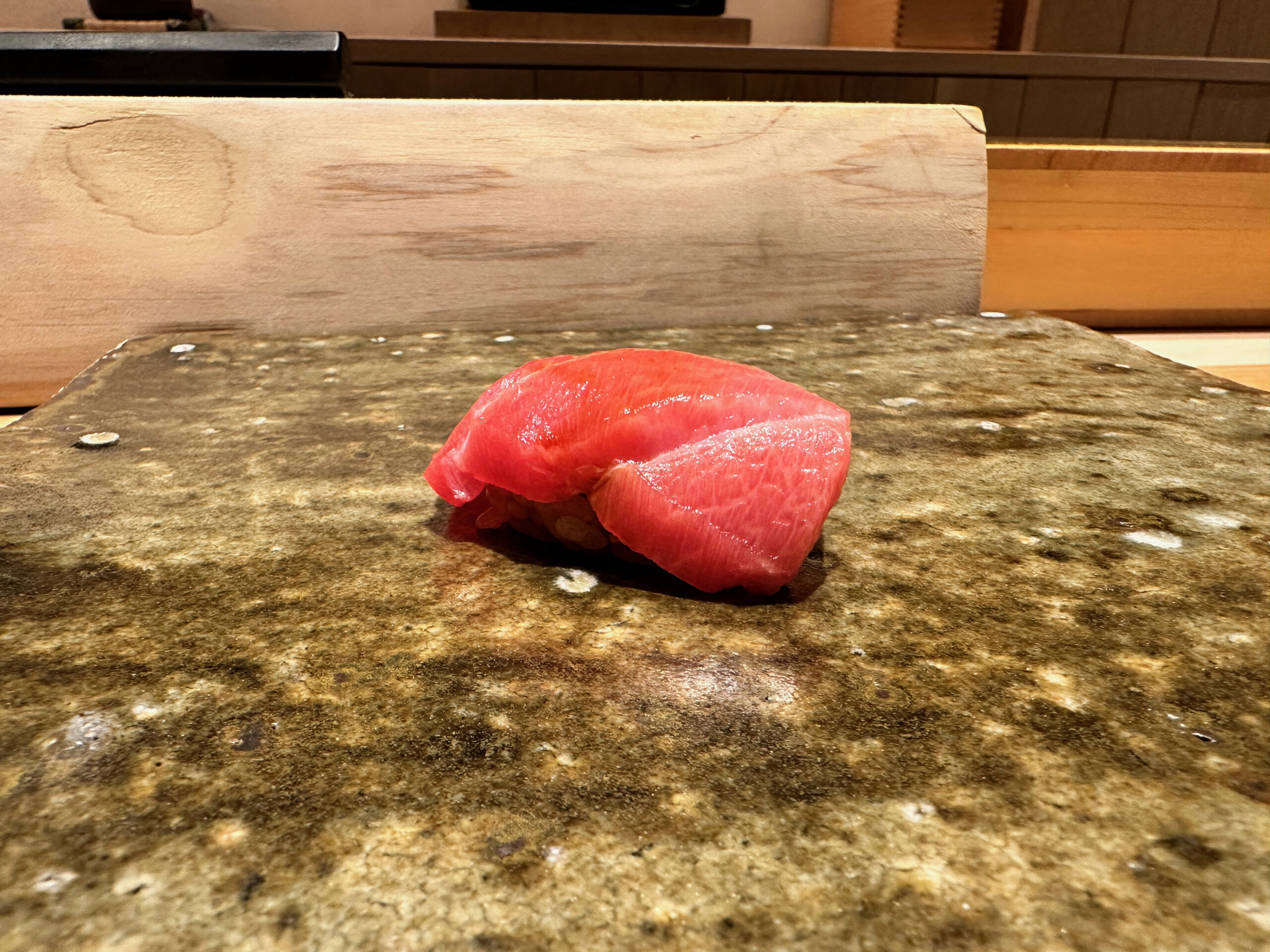
20: O Toro
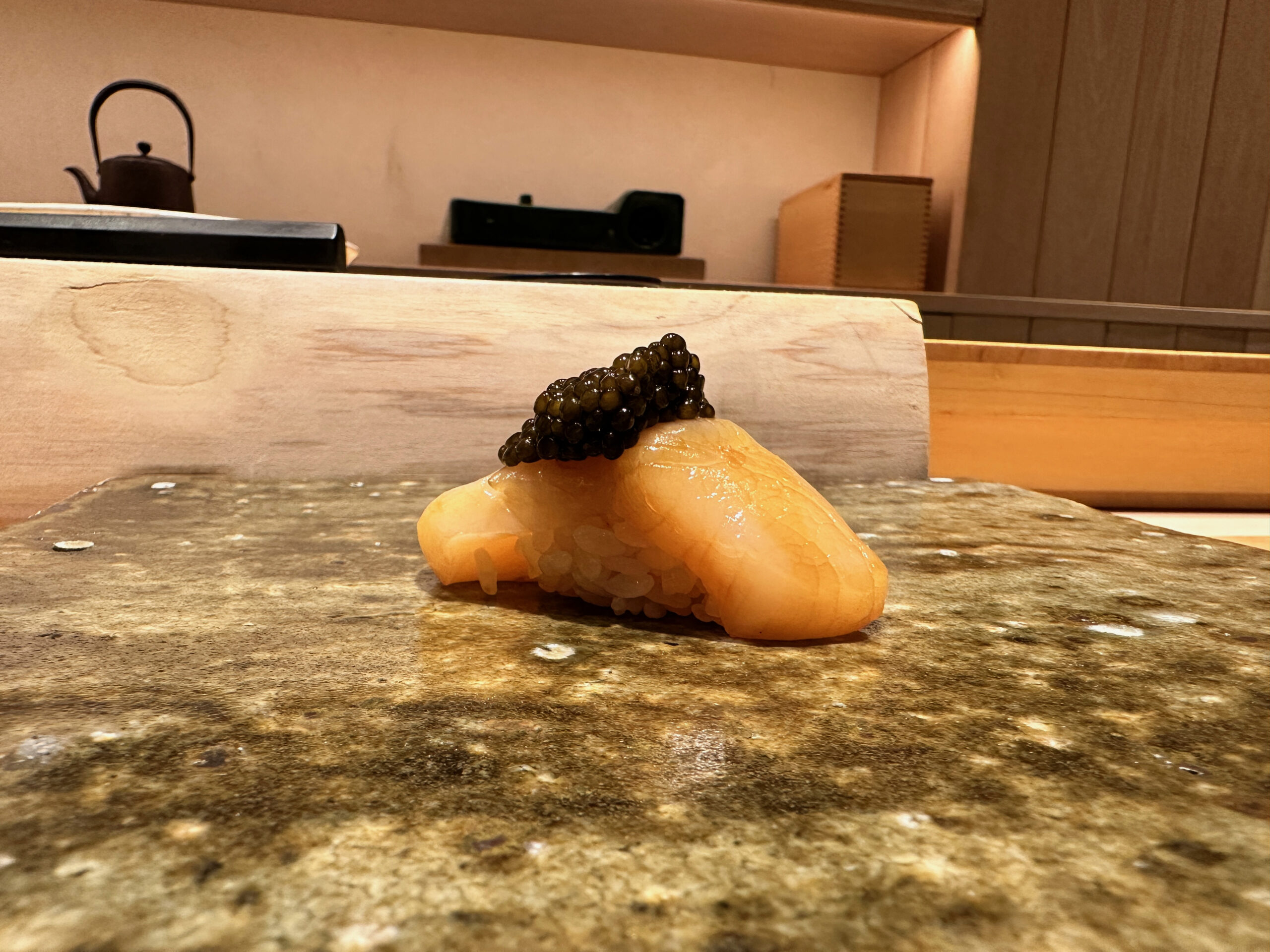
21: Hotategai with Kaviari Kristal caviar
I wasn’t thrilled by the last nigiri
Namba-san is known for his creativity. So perhaps the Hotategai course was part that, part cater to the New York City crowd. But if I wanted Hotategai with mediocre caviar on top, there are approximately 400,000 chalkboard omakases in this city that serve it four times a night and sometimes at lunch. Though I did enjoy the Kaviari caviar (Kristal, I believe), it didn’t help that the nigiri fell apart when picked up. Not even a clean break, just a deconstructed mess.
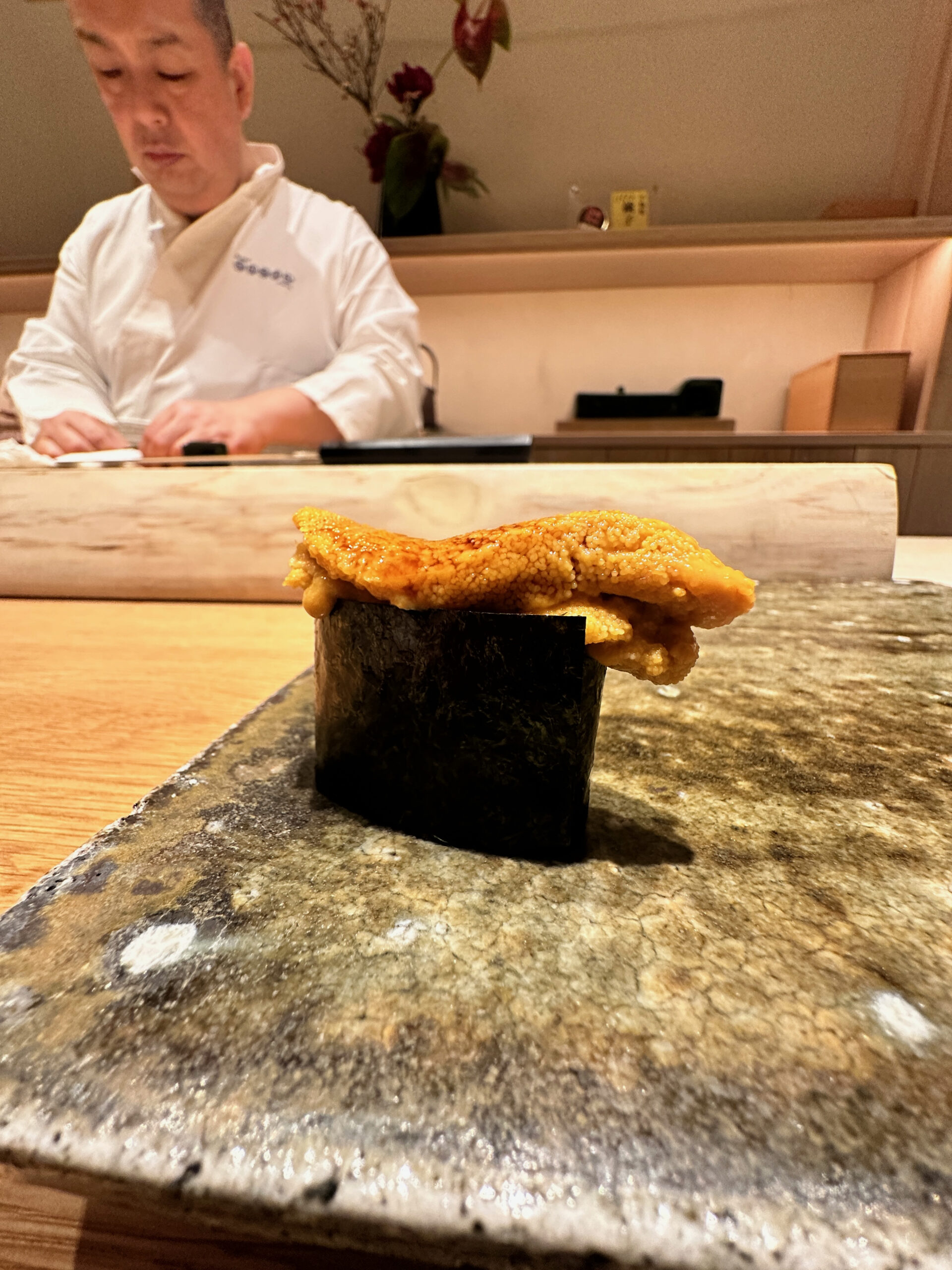
22: Kita Murasaki Uni from Aomori Prefecture (I believe)
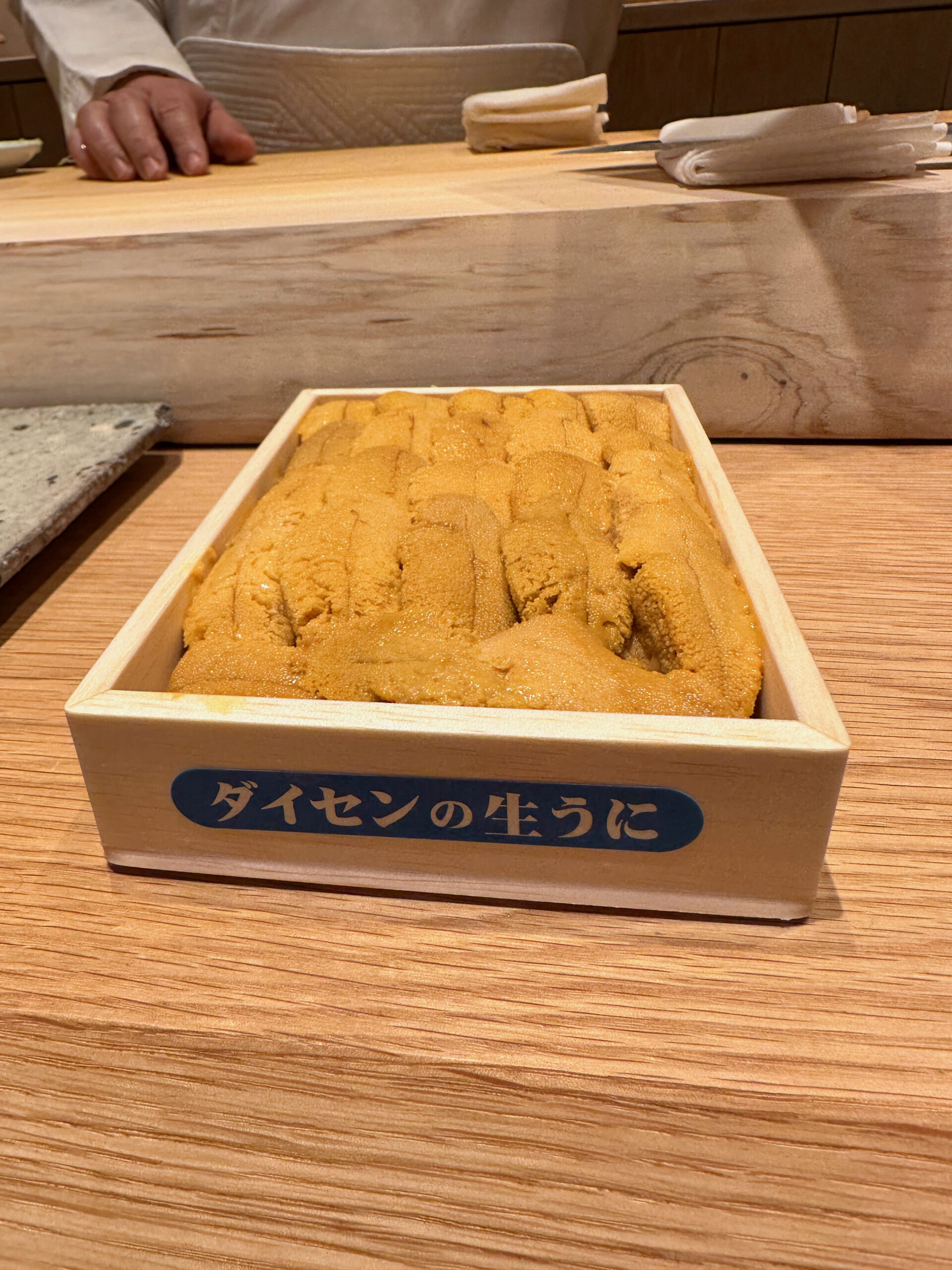
Uni was from Daisen, a renowned brand. I had it previously at Nakaji in Chinatown.
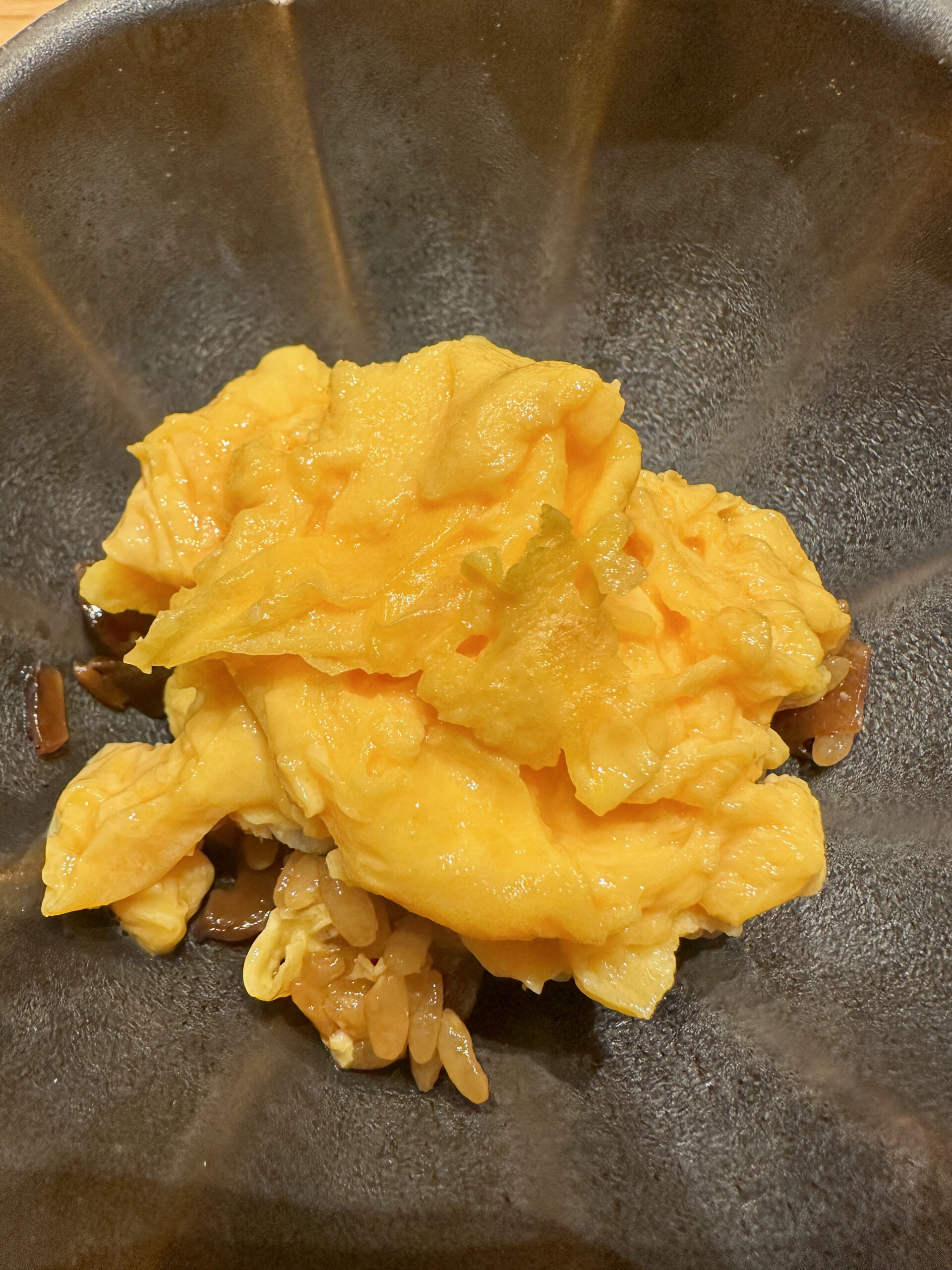
23: Tamago with shari and some other goodies I forgot to write down – sue me (please don’t)
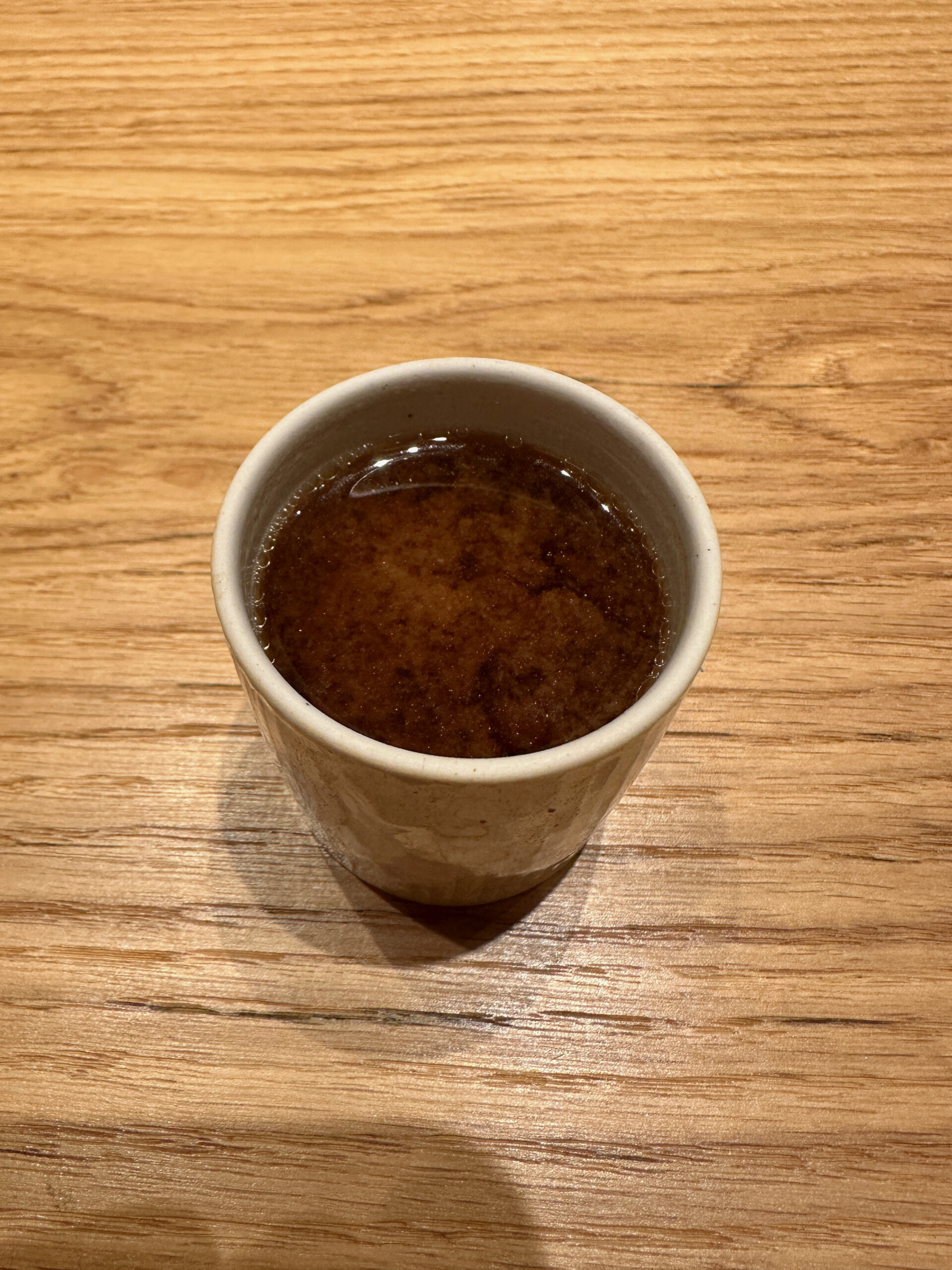
24: Miso soup
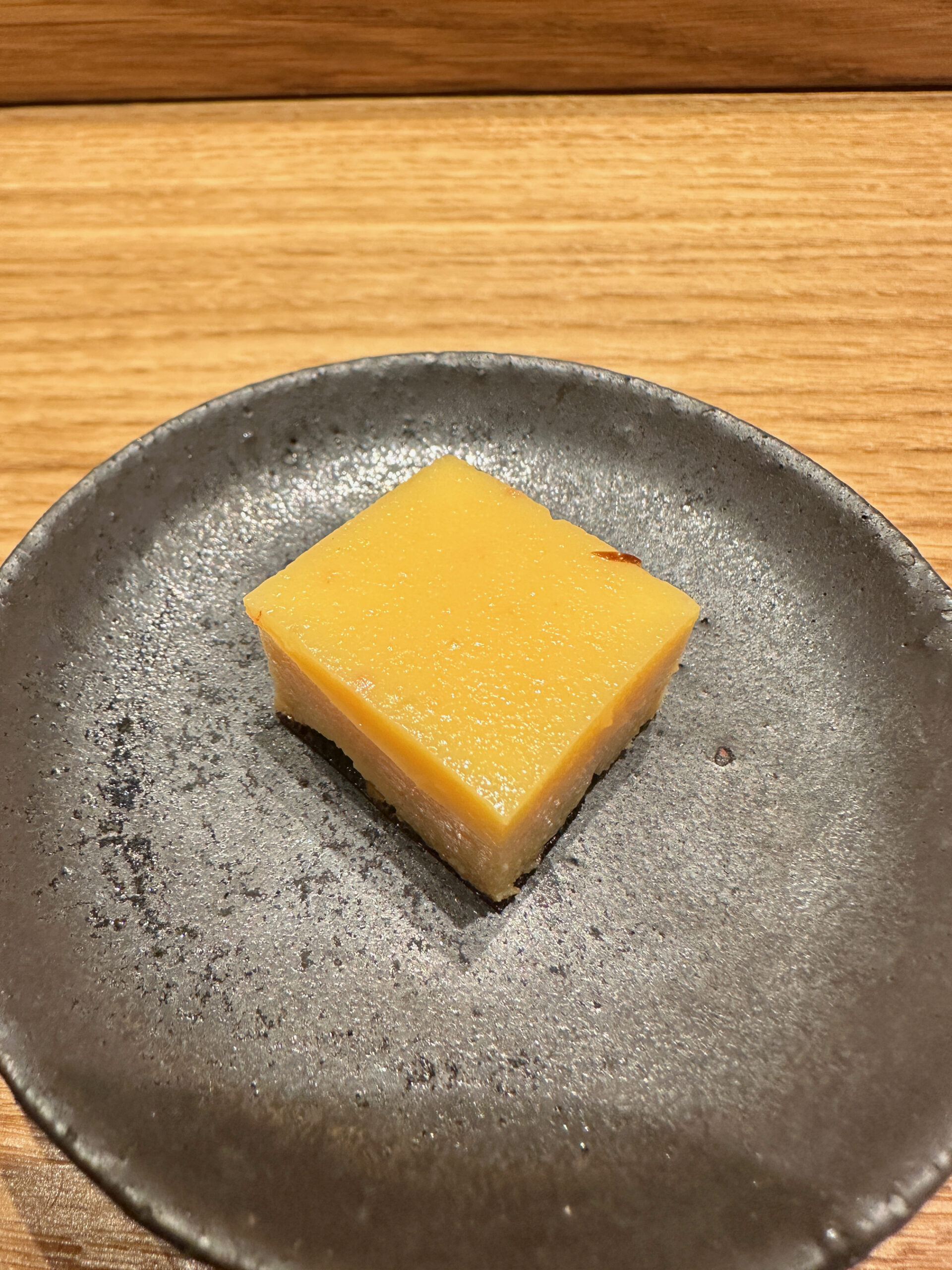
25: Tamago
I enjoyed this meal
Though pop-ups are notoriously more difficult than you’d think, it’s clear the quality of the itamae, his team and sushiya didn’t materially suffer. This was a treat, though there were hiccups. I didn’t love the hotategai, the anago was both mediocrely tasting and placed, and there was confusion on which customers had received certain courses and a ten minute break (for rice replenishment?). But if you have the disposable income, it’s a lot cheaper to visit TriBeCa than Hibiya.
But there in lies the rub
It’s expensive. There’s no sugarcoating, and this epidemic is getting worse. Yesterday, I saw that Sushi Ichimura – a sushiya I reviewed here – has one-upped the Sendo folks with their own SakeXSushi pop-up.
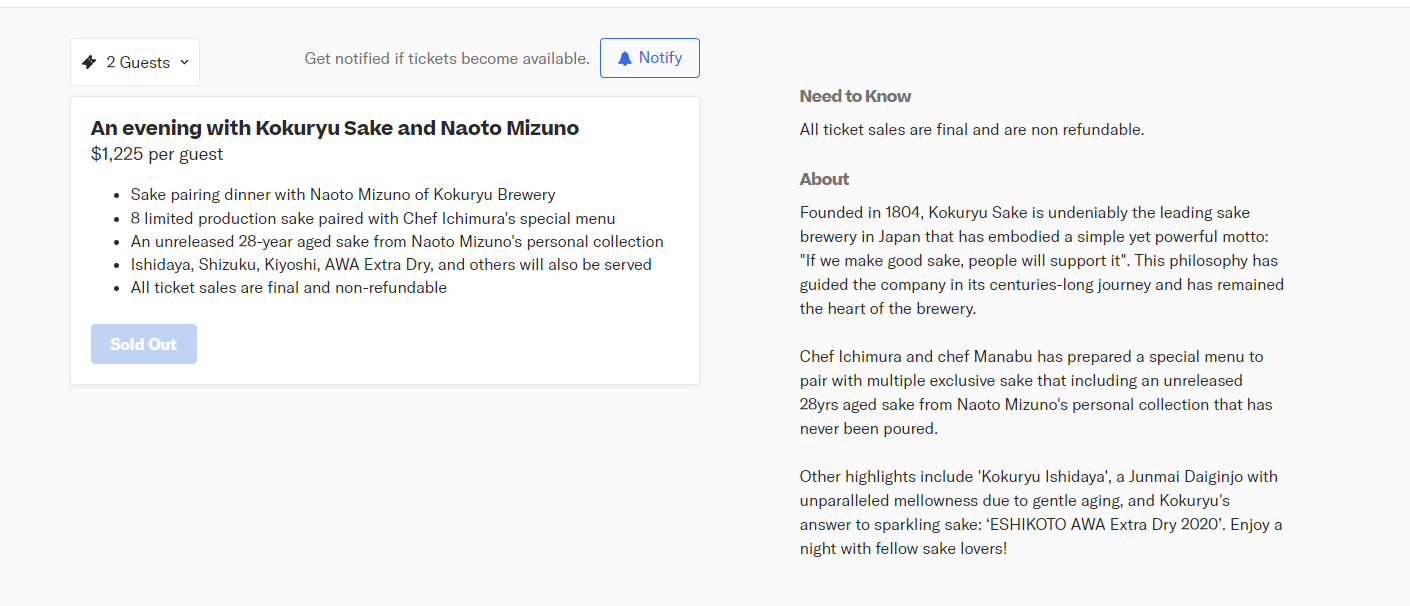
Yes, that’s $1,225 American Dollars.
Now, these fees do includes taxes, tips and supposedly free sake, and ringing these legends, their teams and ingredients across the world isn’t cheap. There’s also lost revenue from closing their shops back home, and the operational challenges that come with any pop-up. But it’s still pricy, and it does up the bar.
So was Sushi Namba the best sushi experience I’ve had in New York? Probably not. But it was a very special night out eating with an Itamae that normally requires a 14 hour flight and a navigation of Tokyo’s complex reservation economy to visit.
And the trend is only moving one direction.
Part of the reason d’etre (did I use that right) for this pop-up was to promote the upcoming satellite location of Sushi Namba in Miami. It will be located at members only Ura with apprentices operating the counter. The cost for a membership? $10,000.
Up and up we go.
